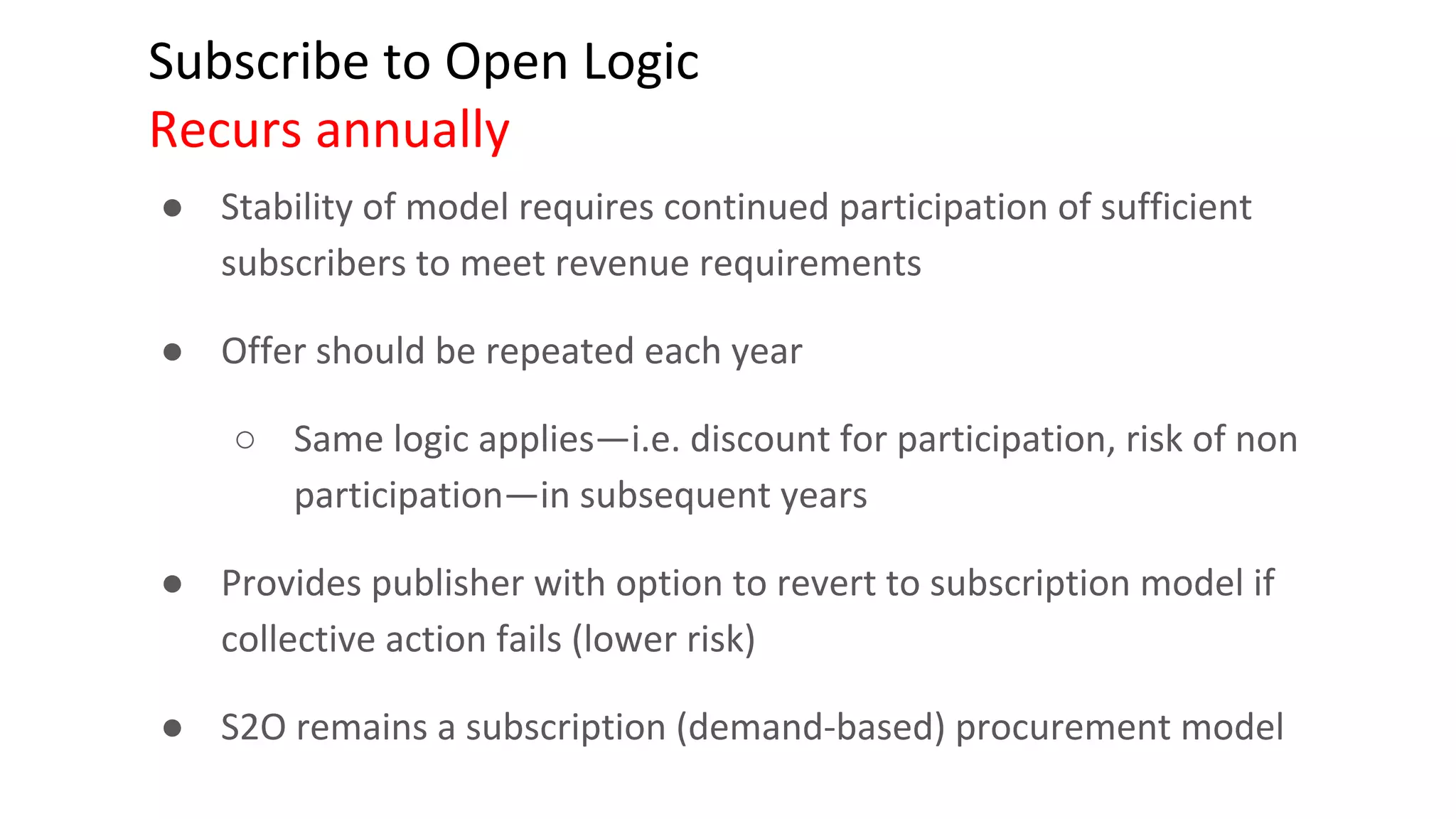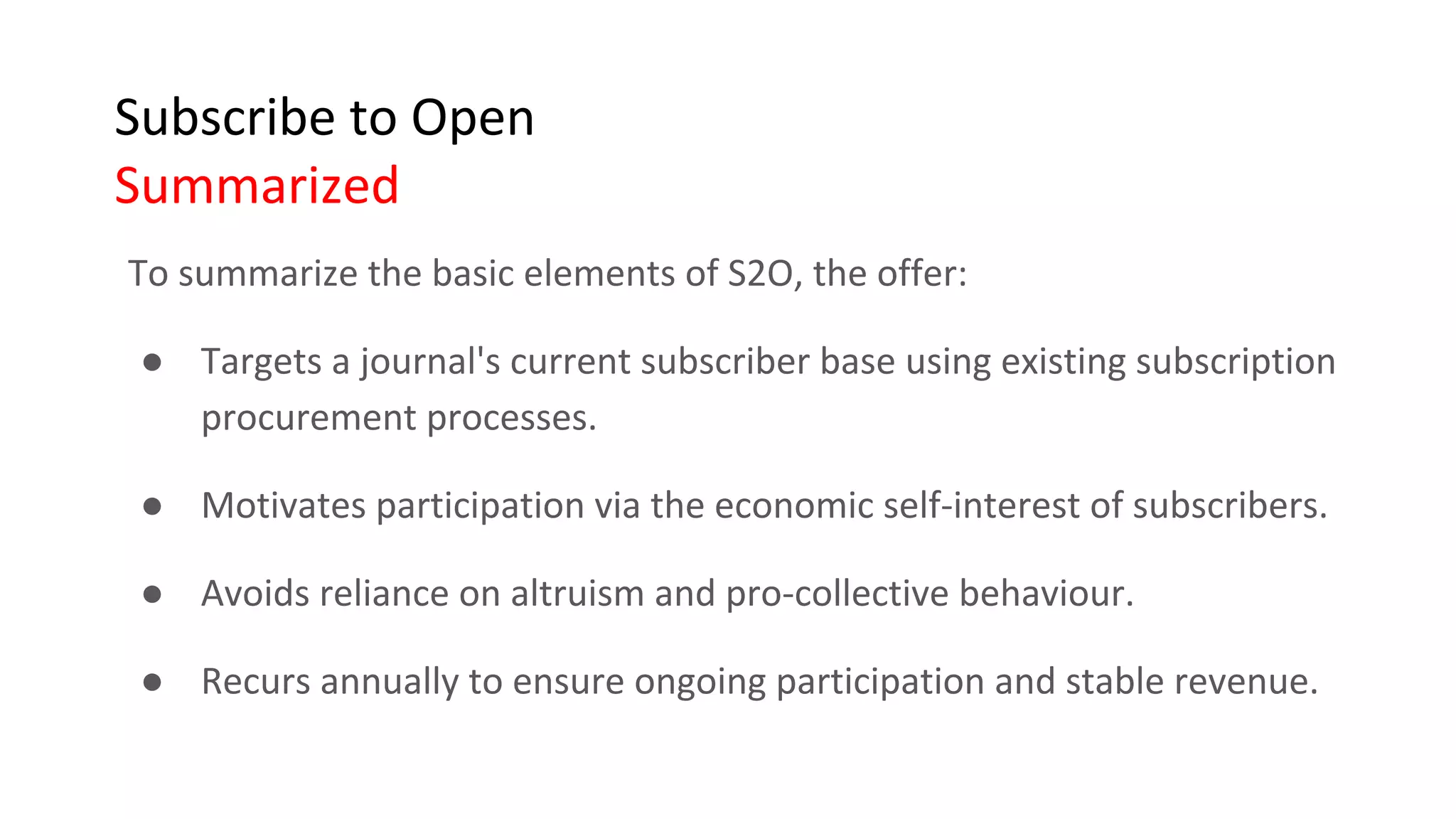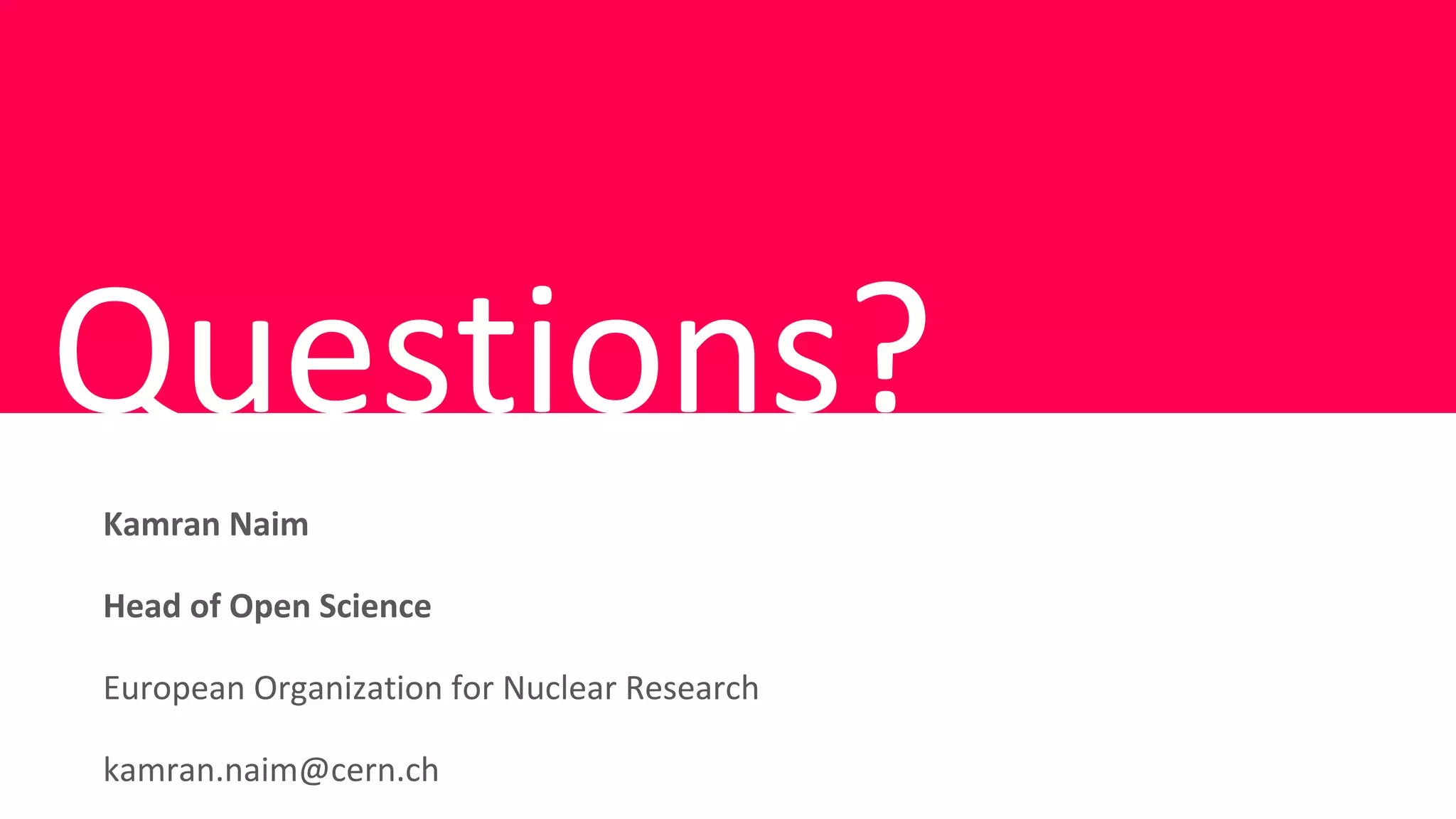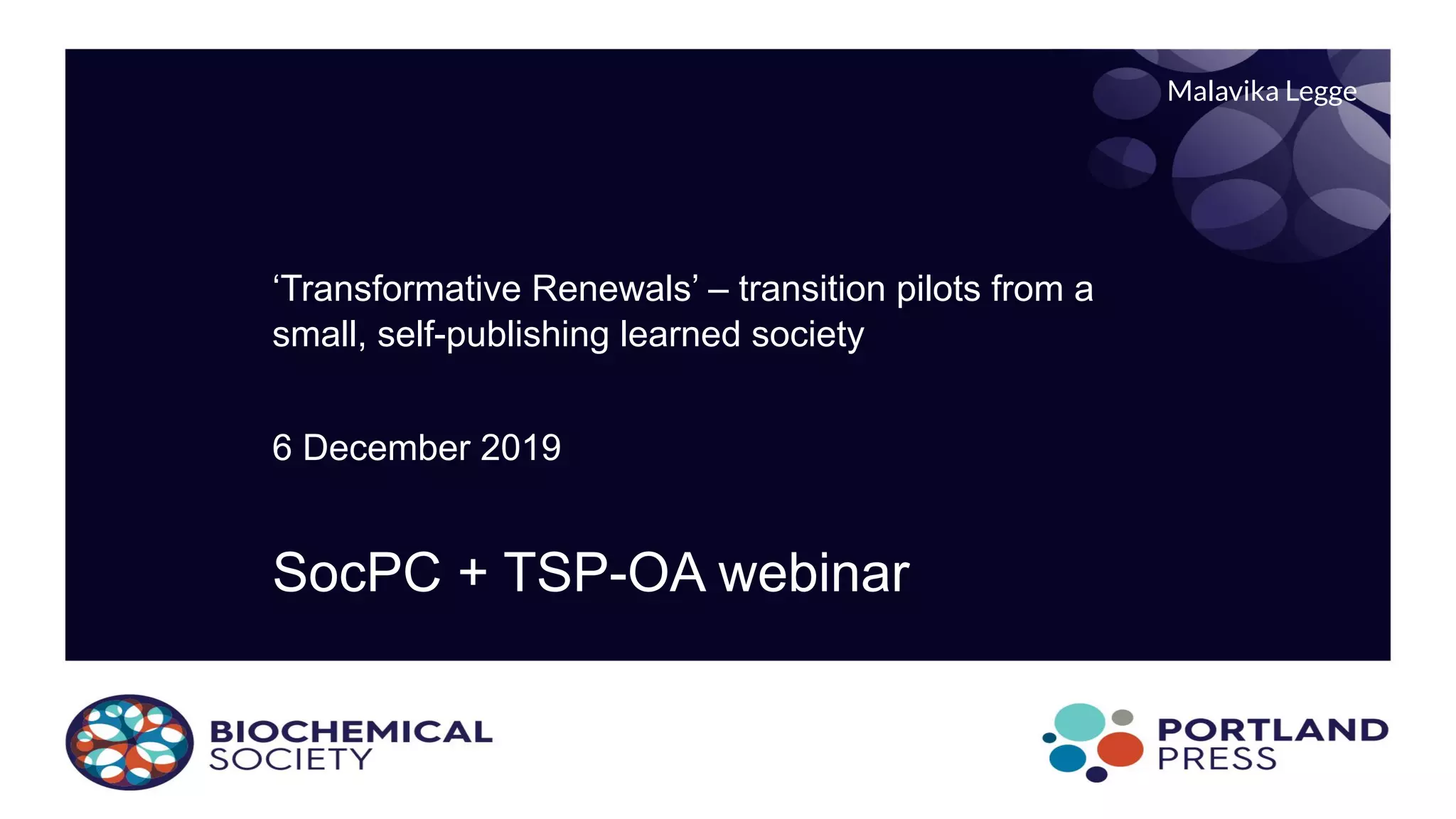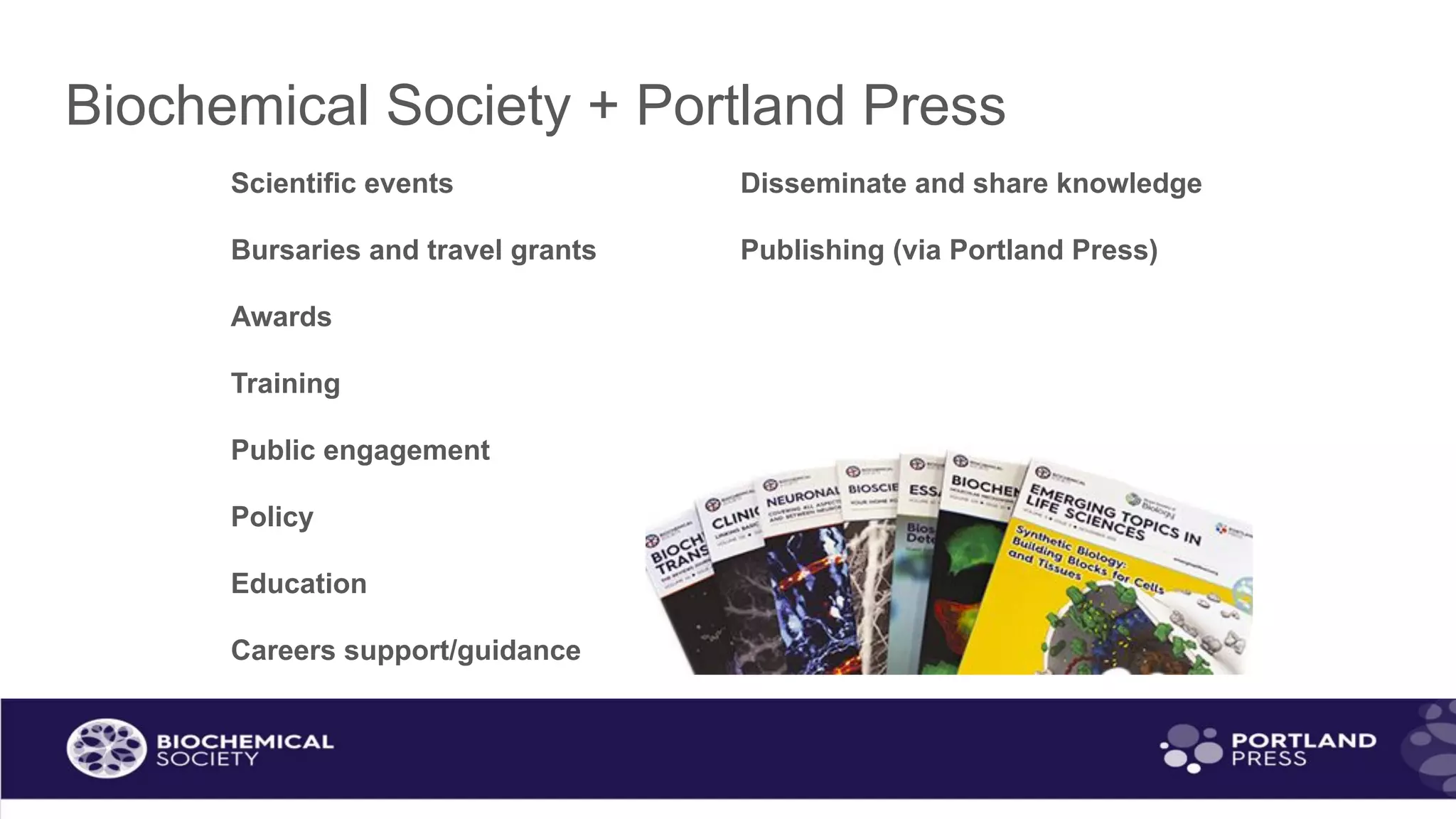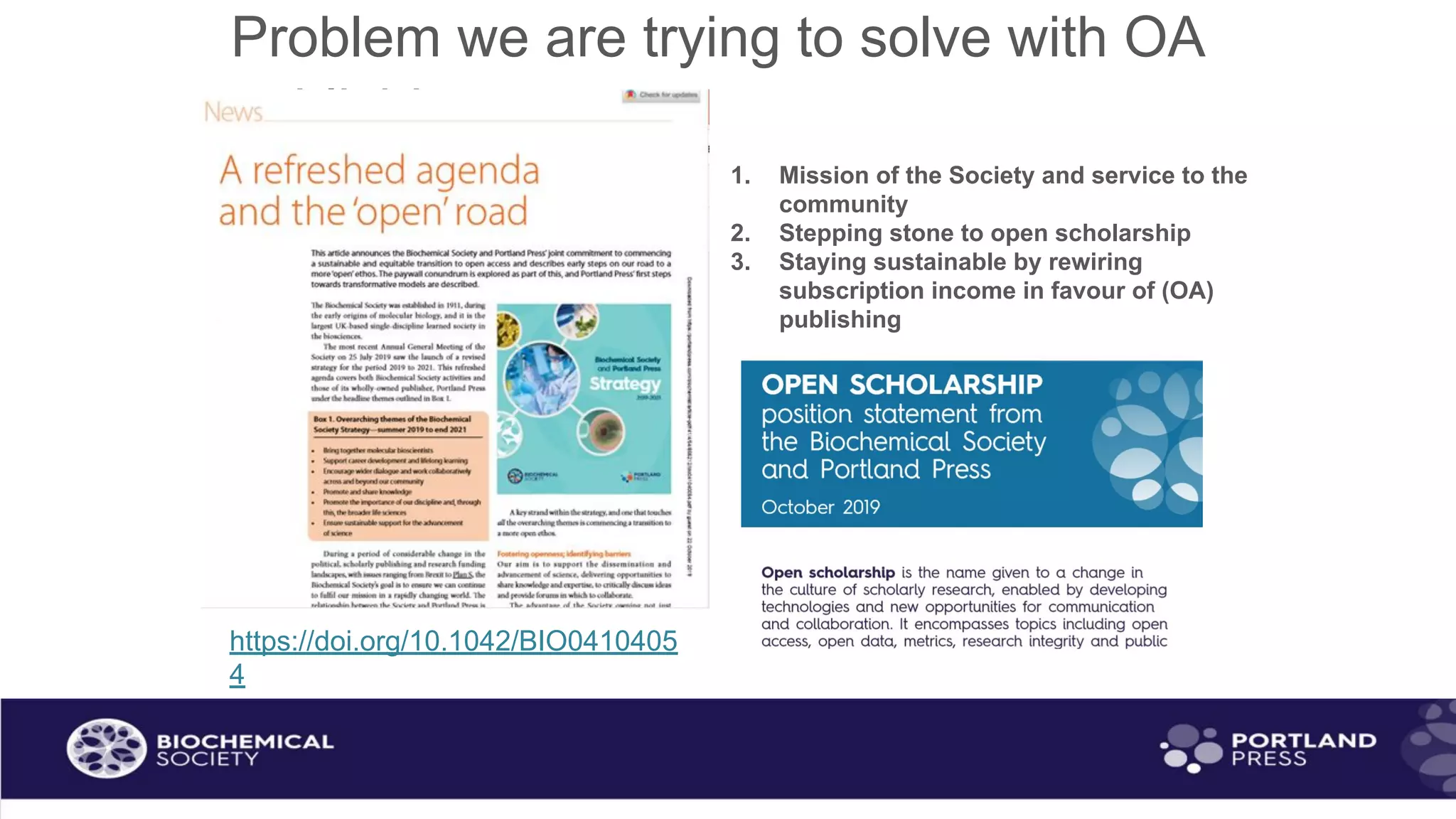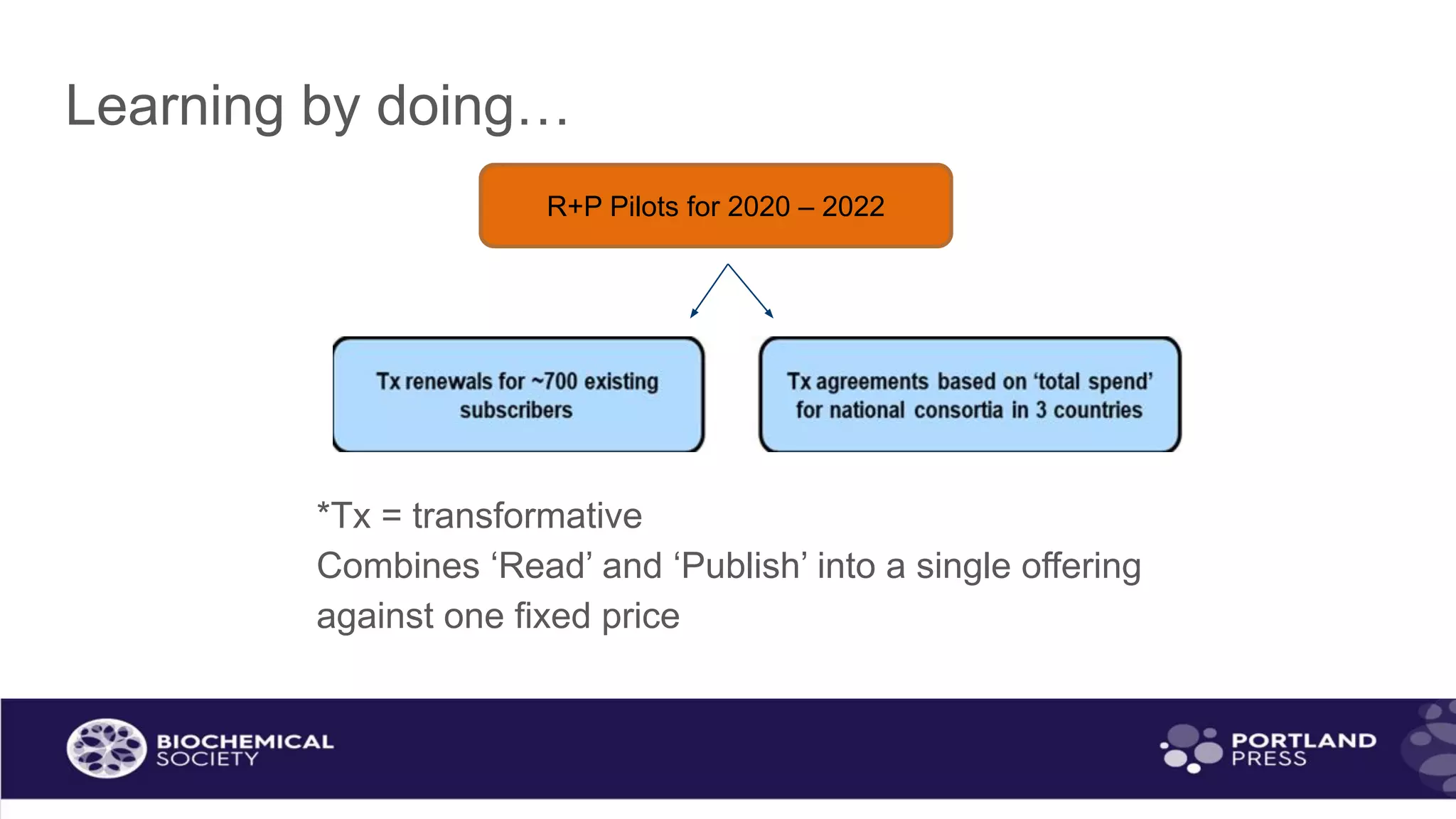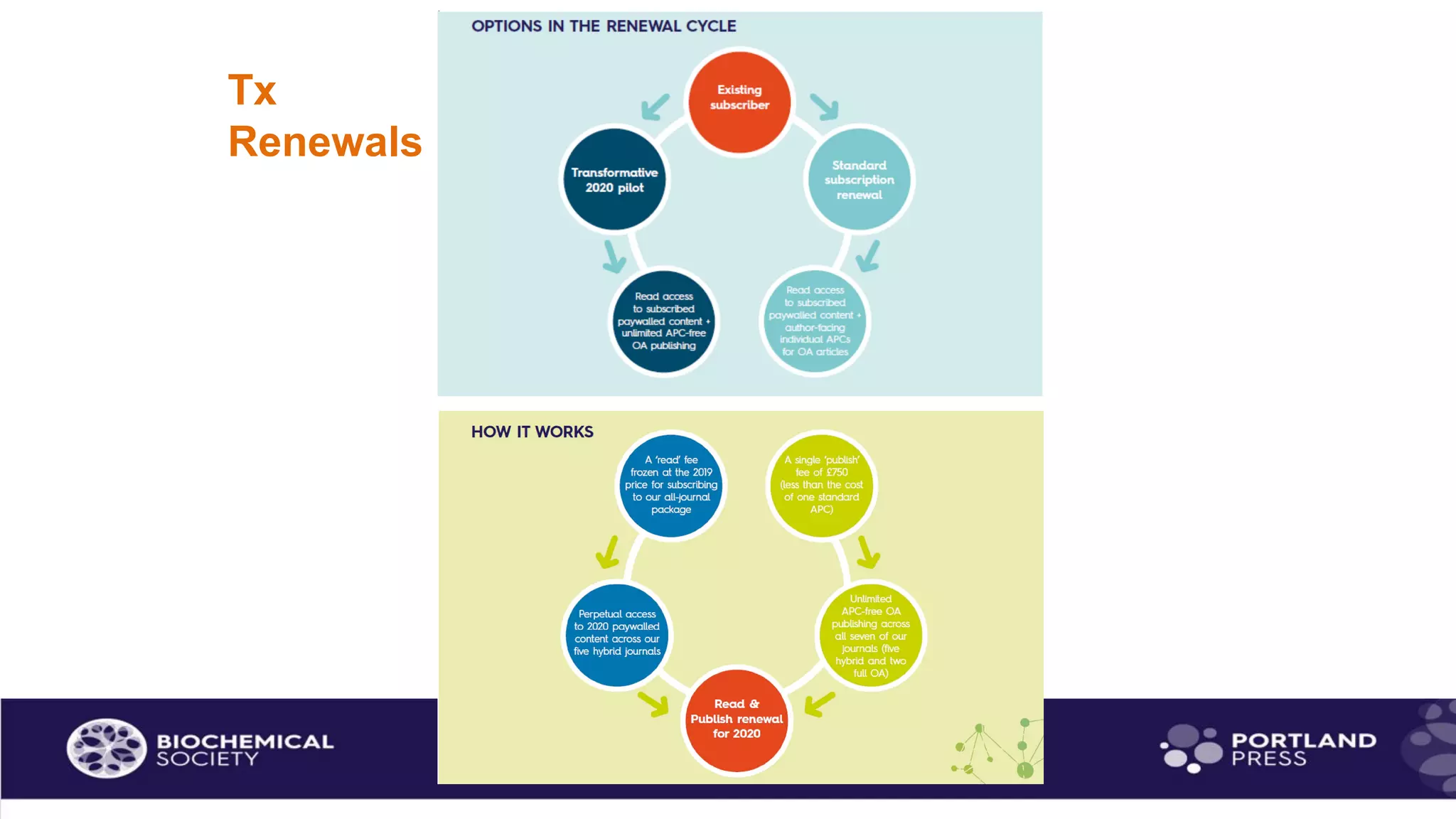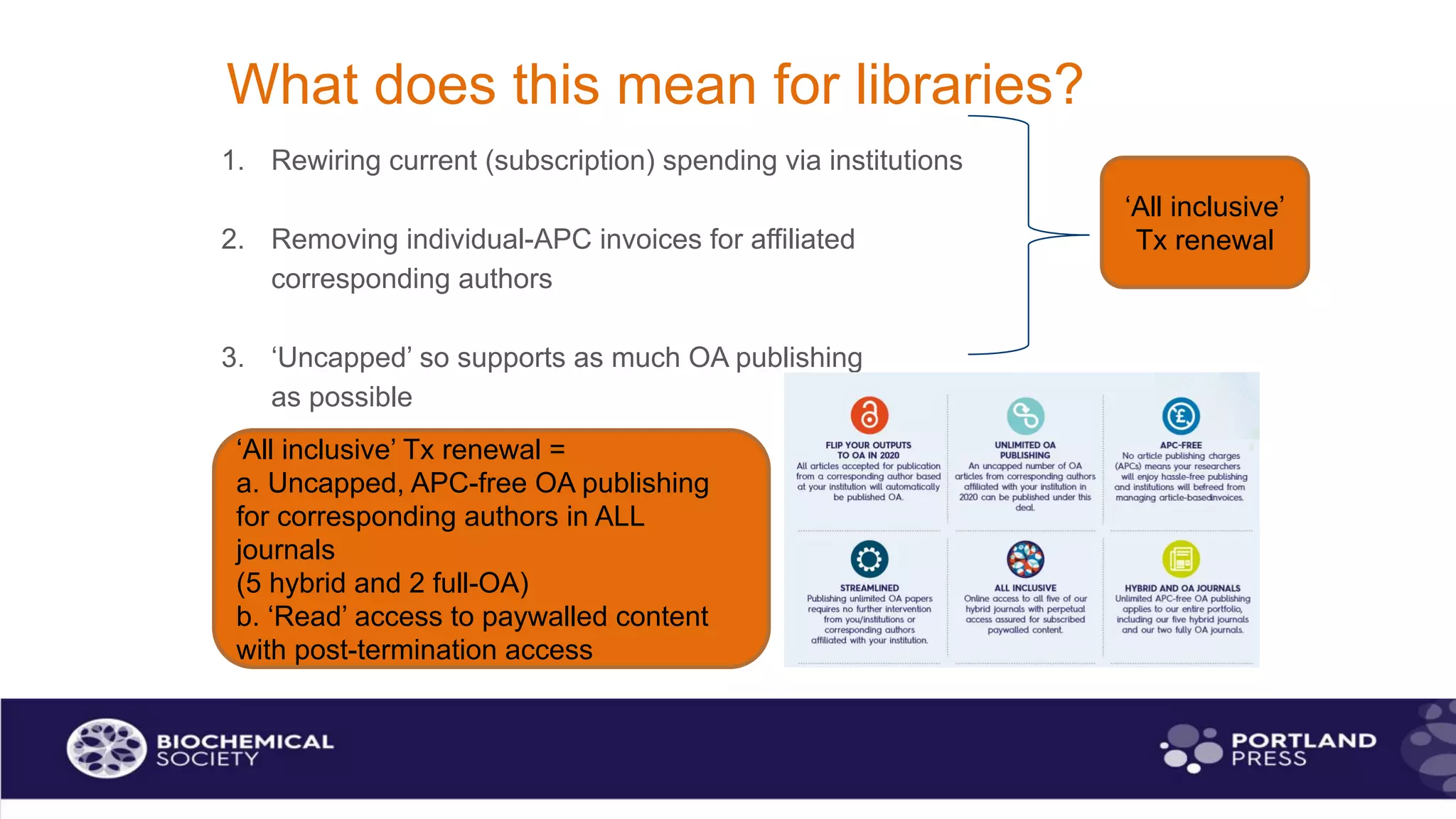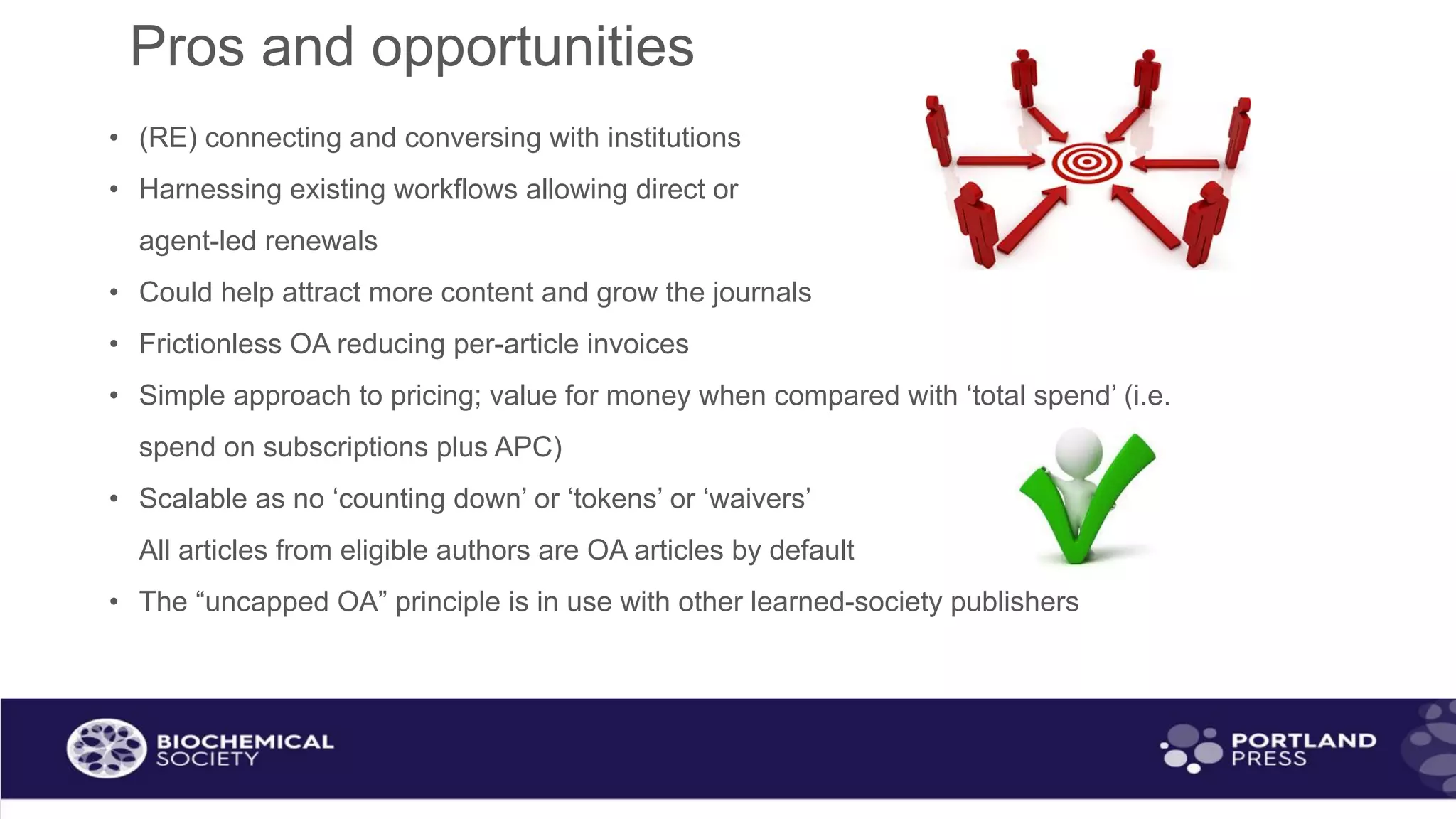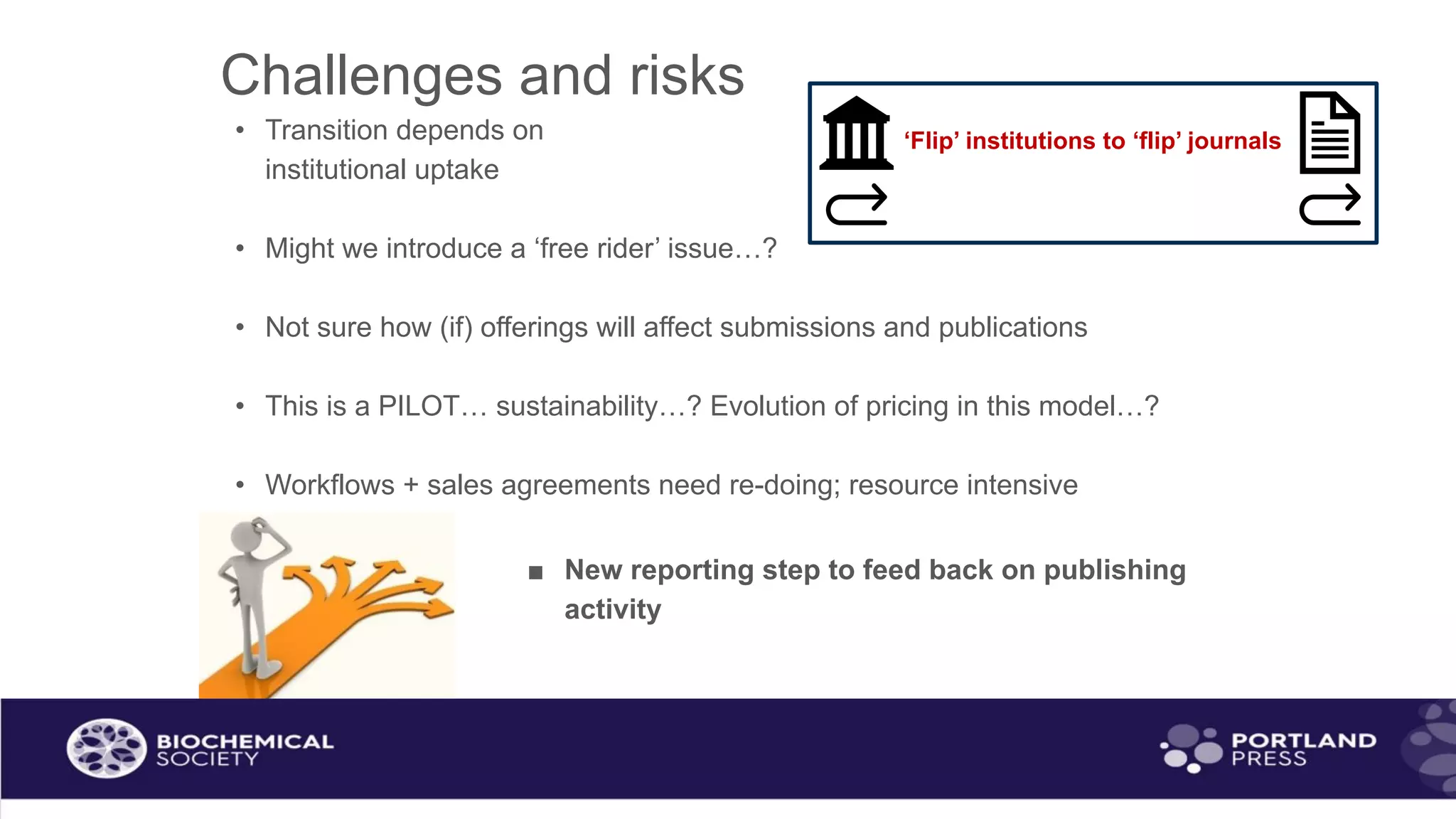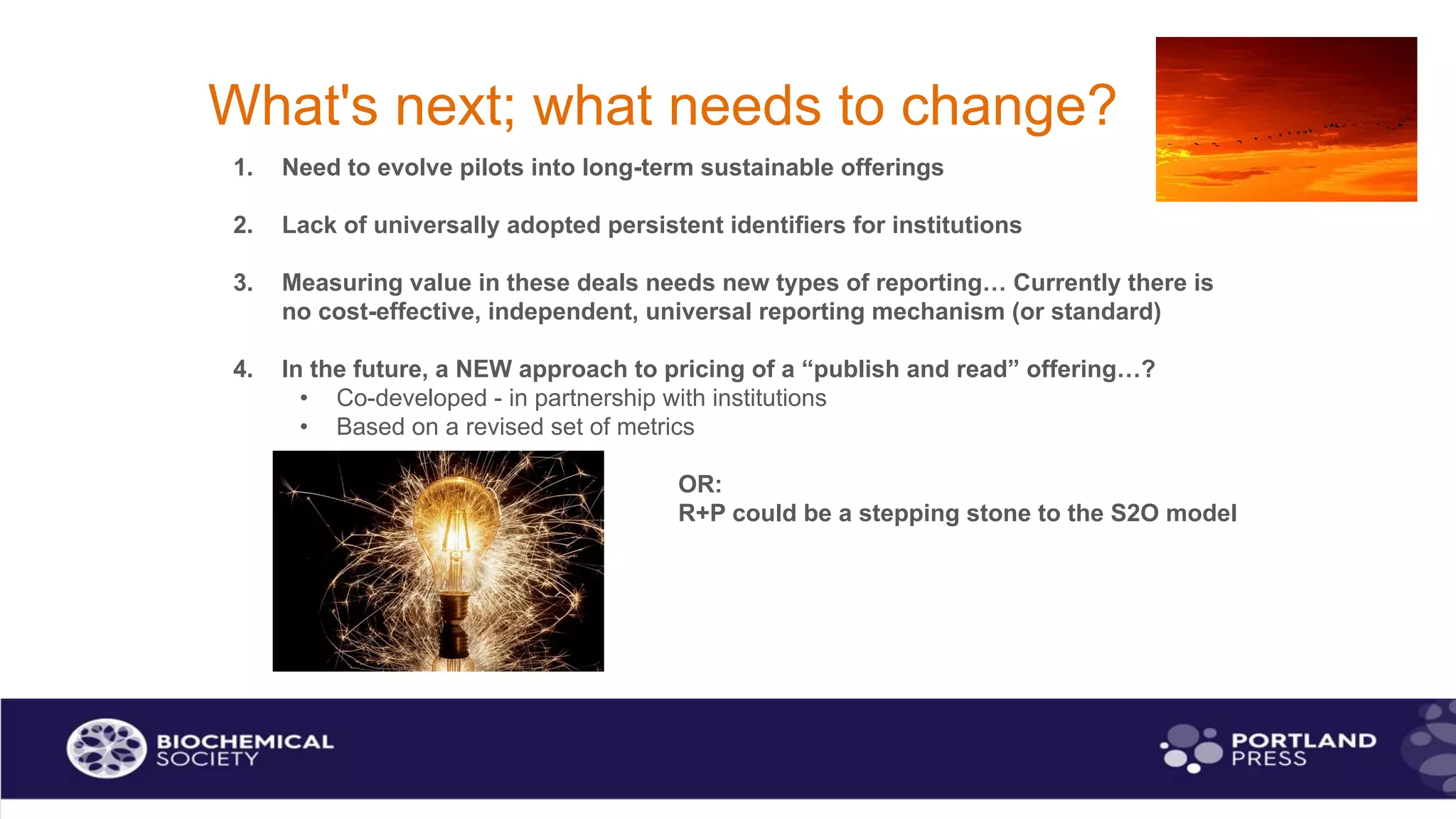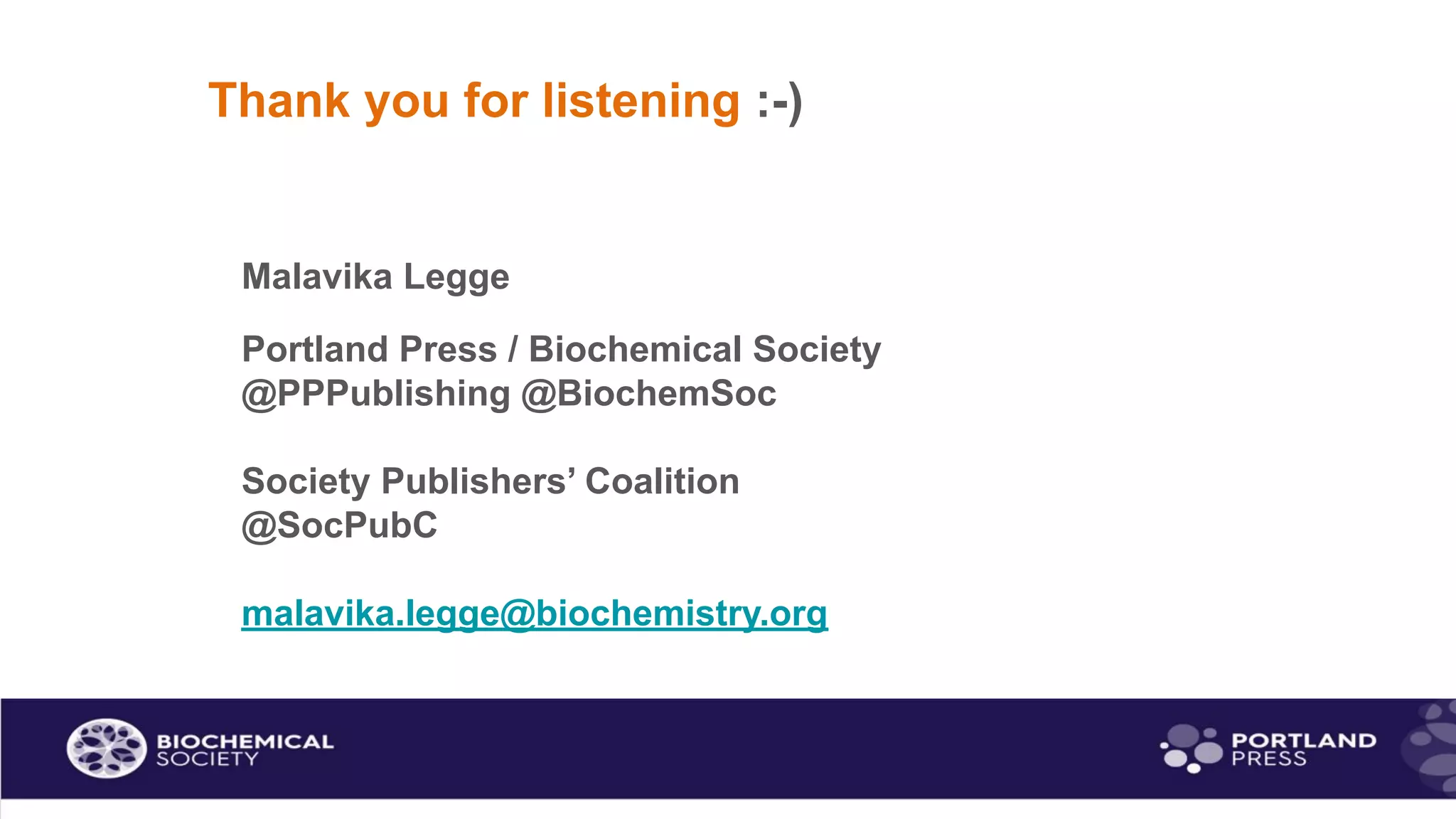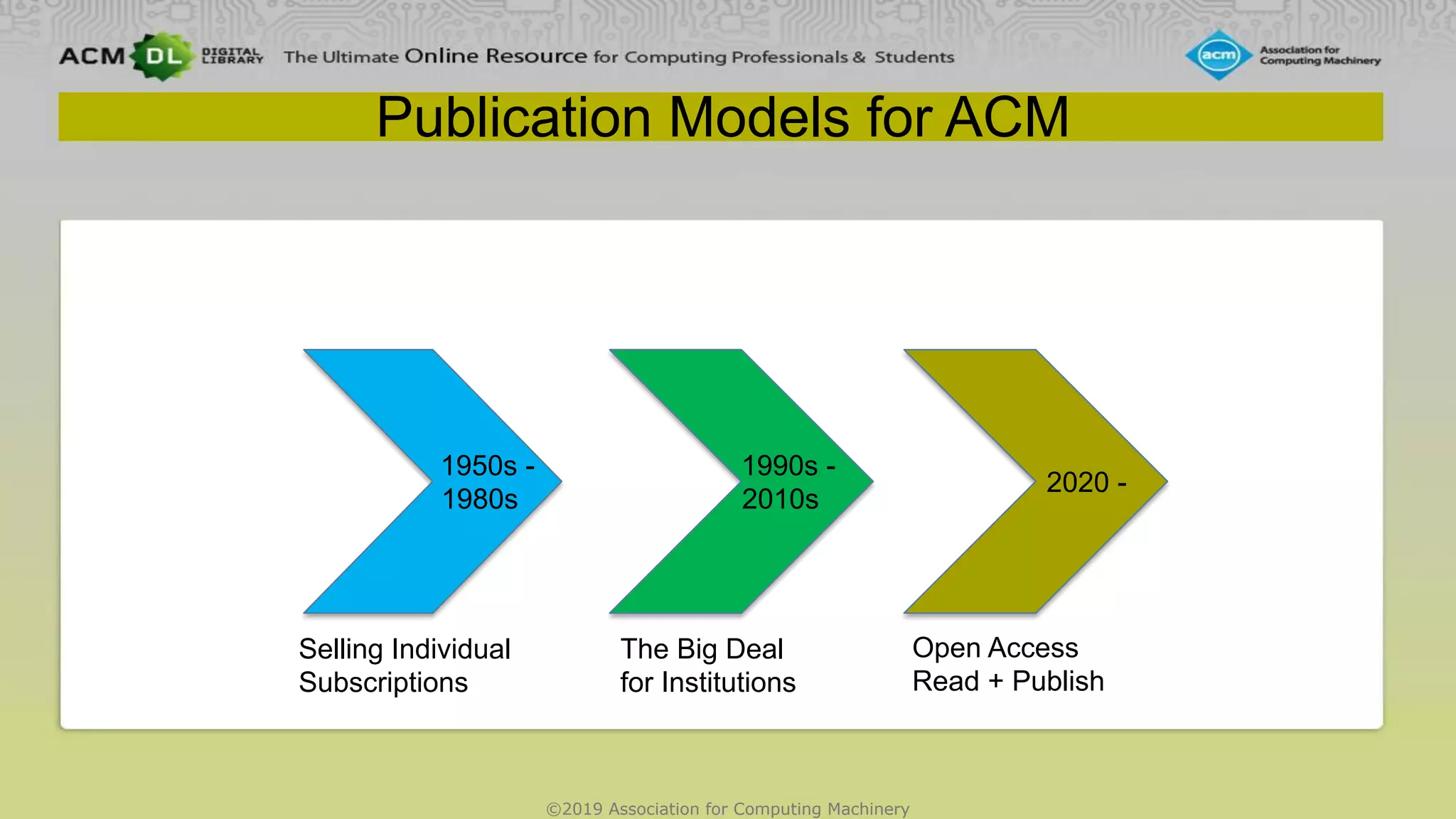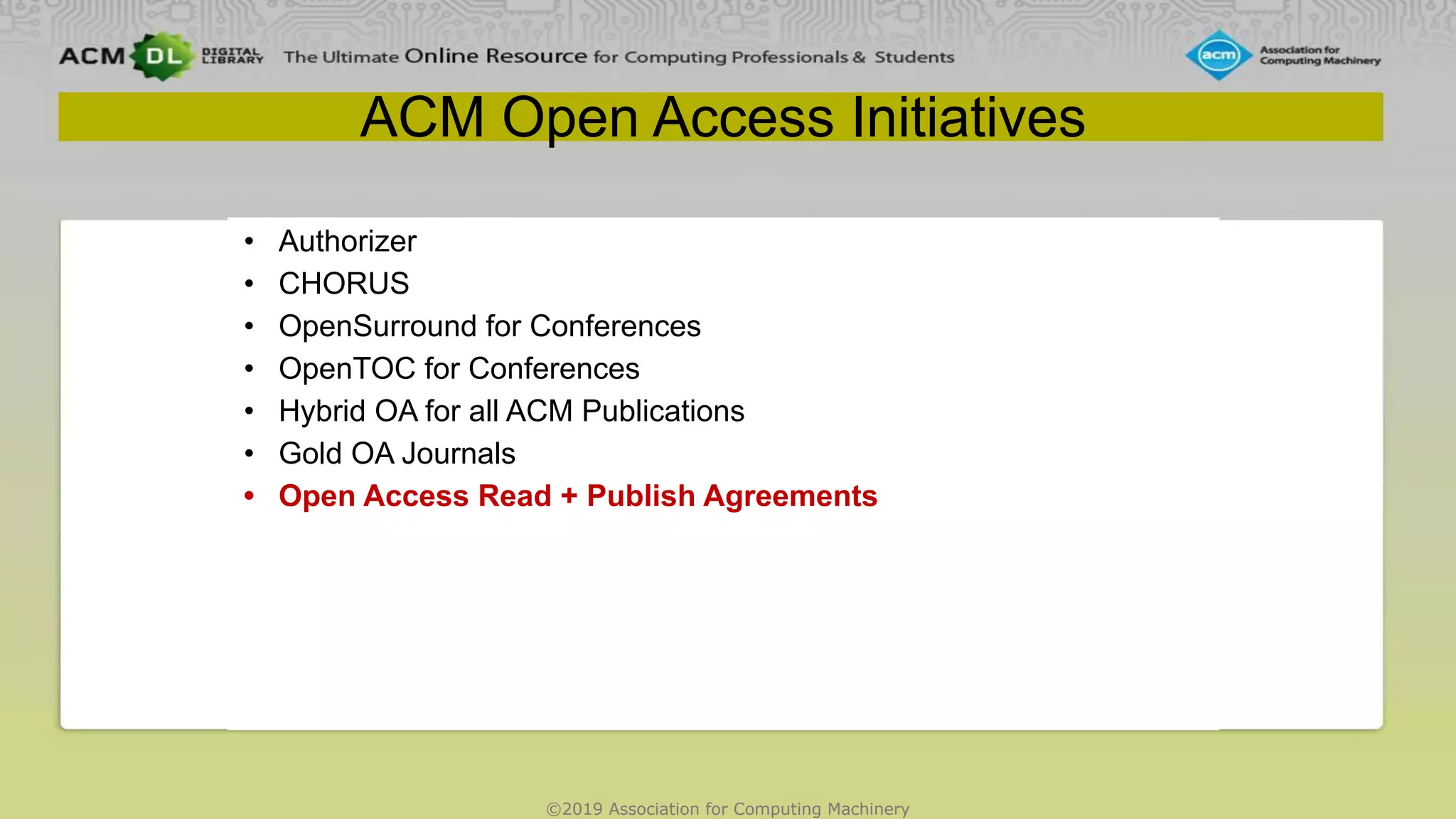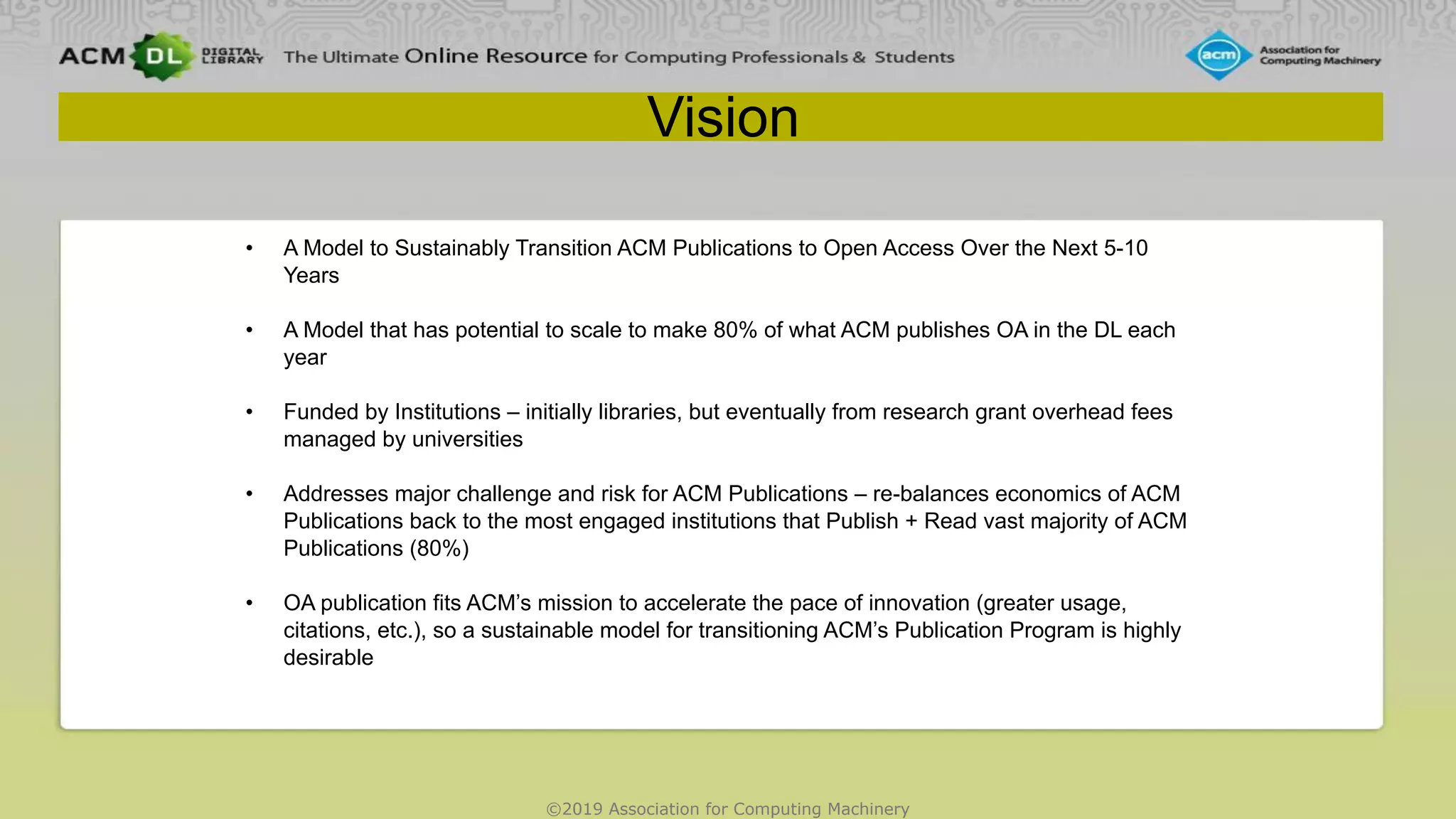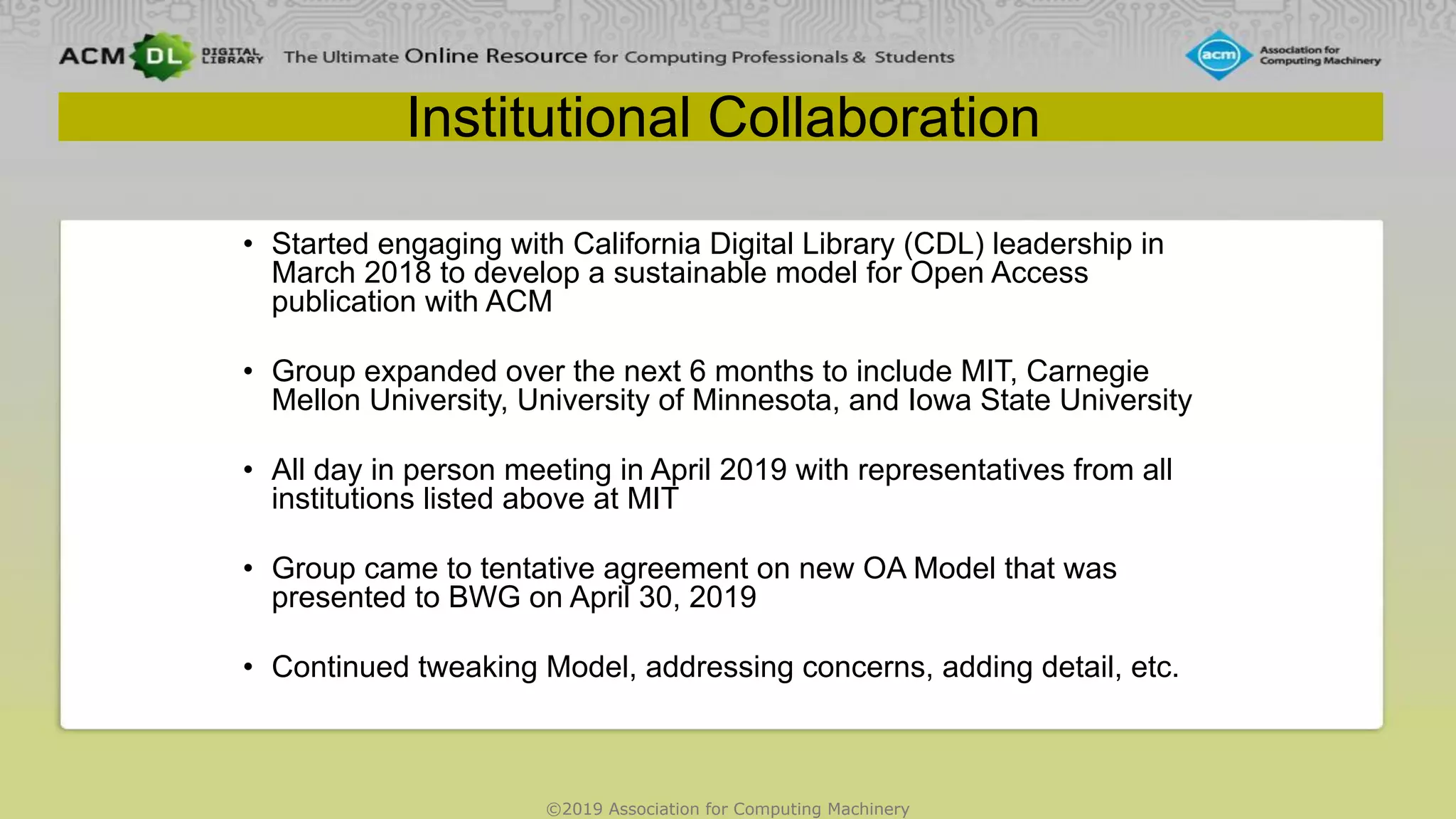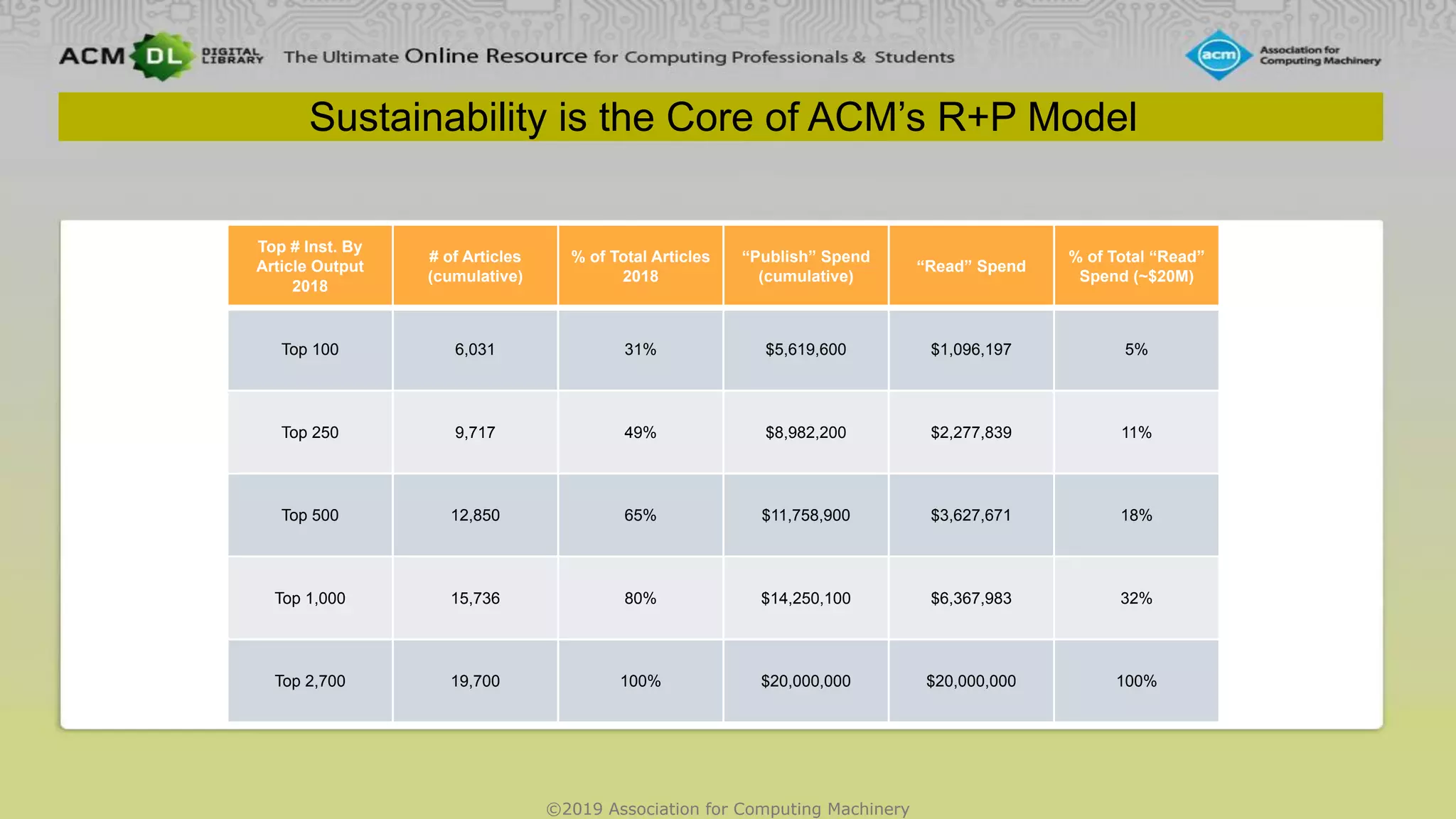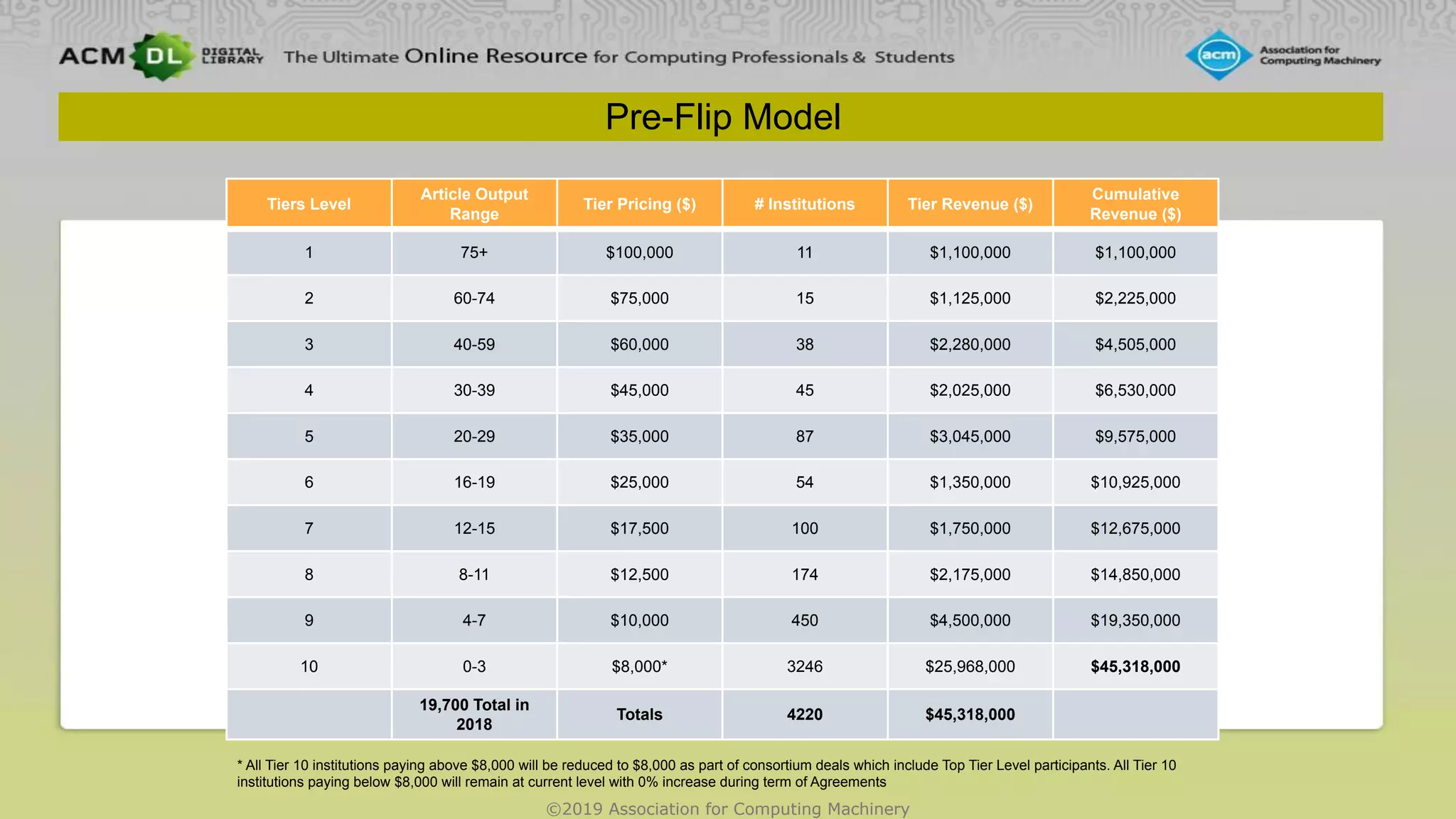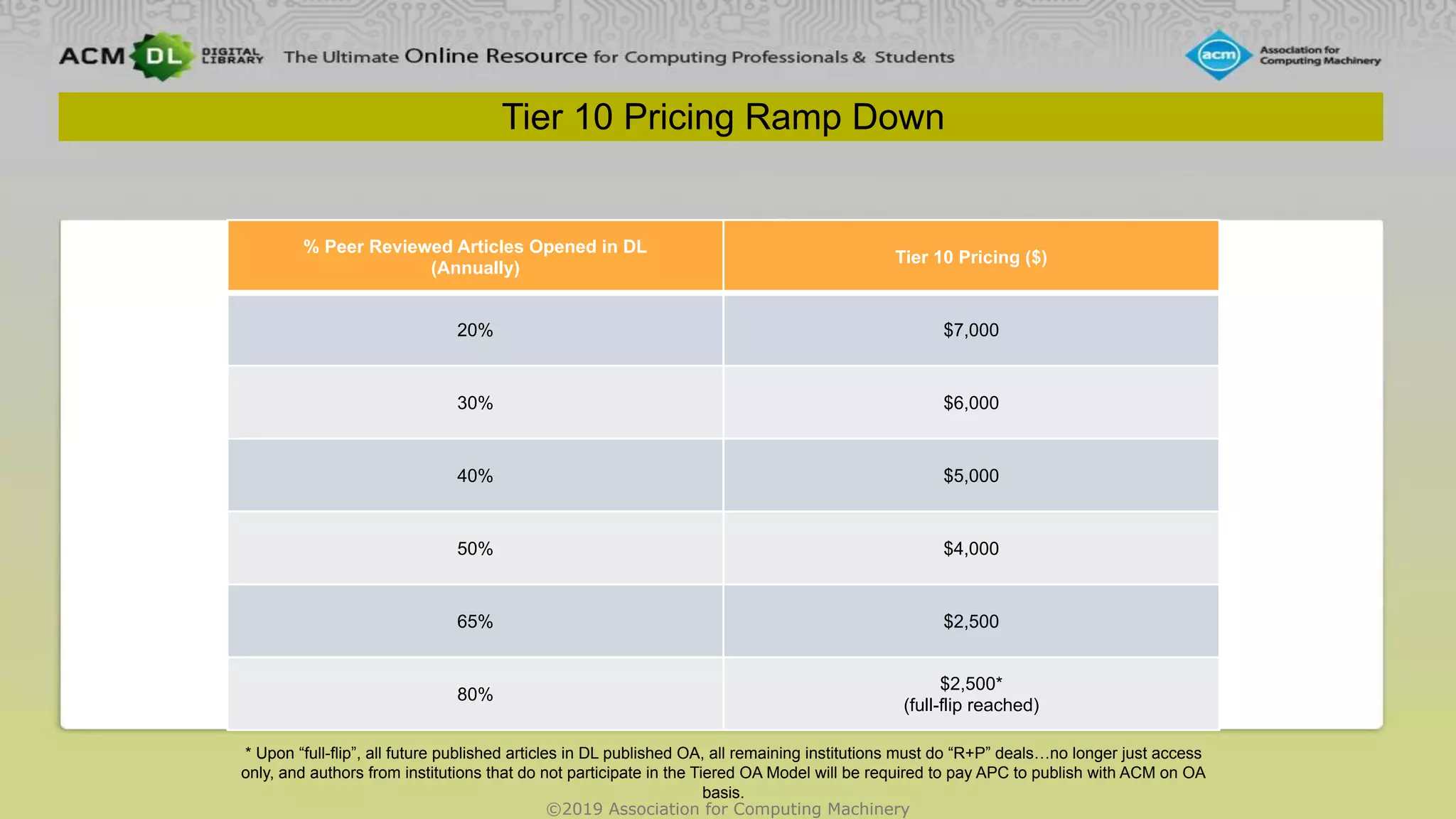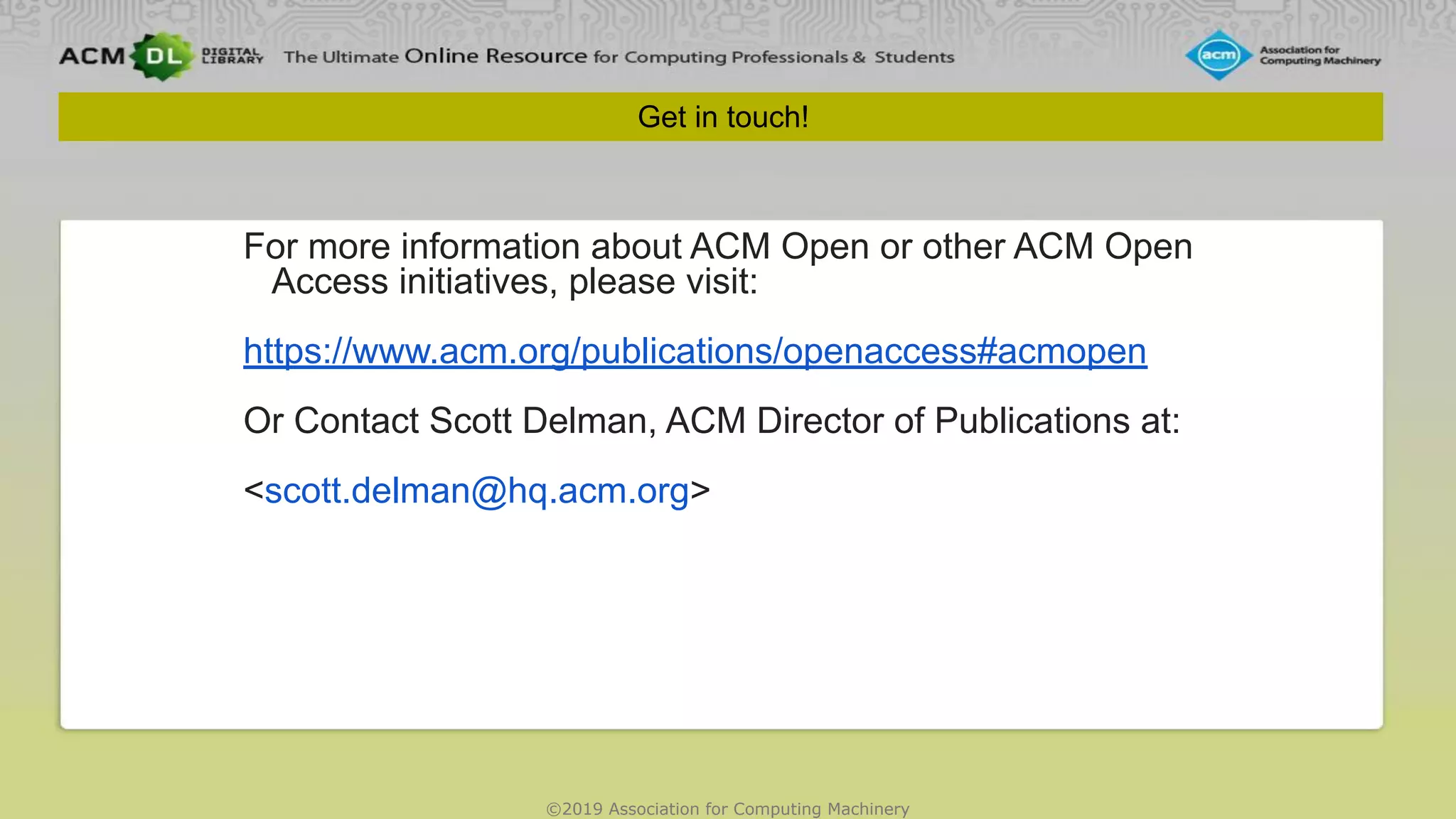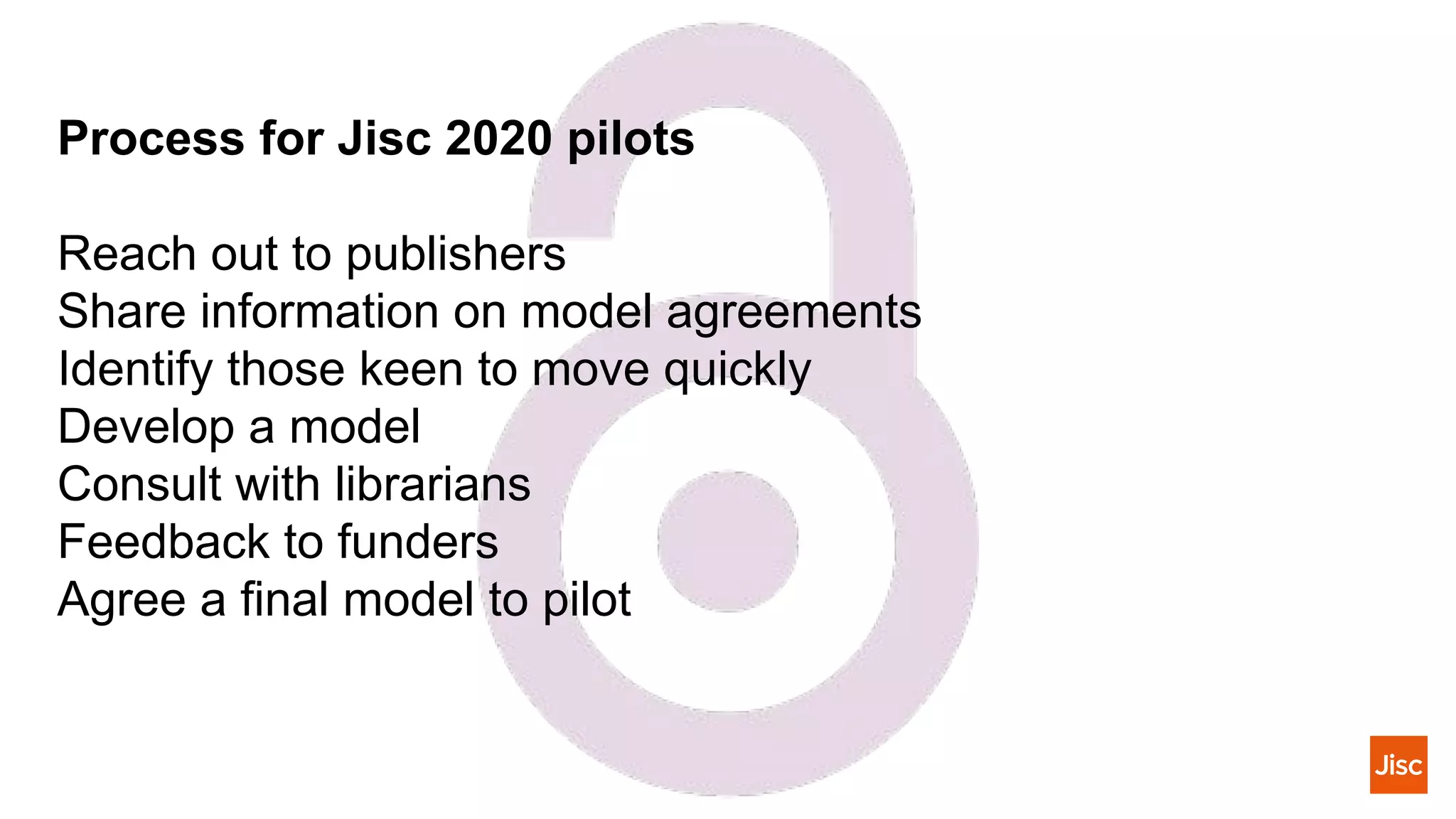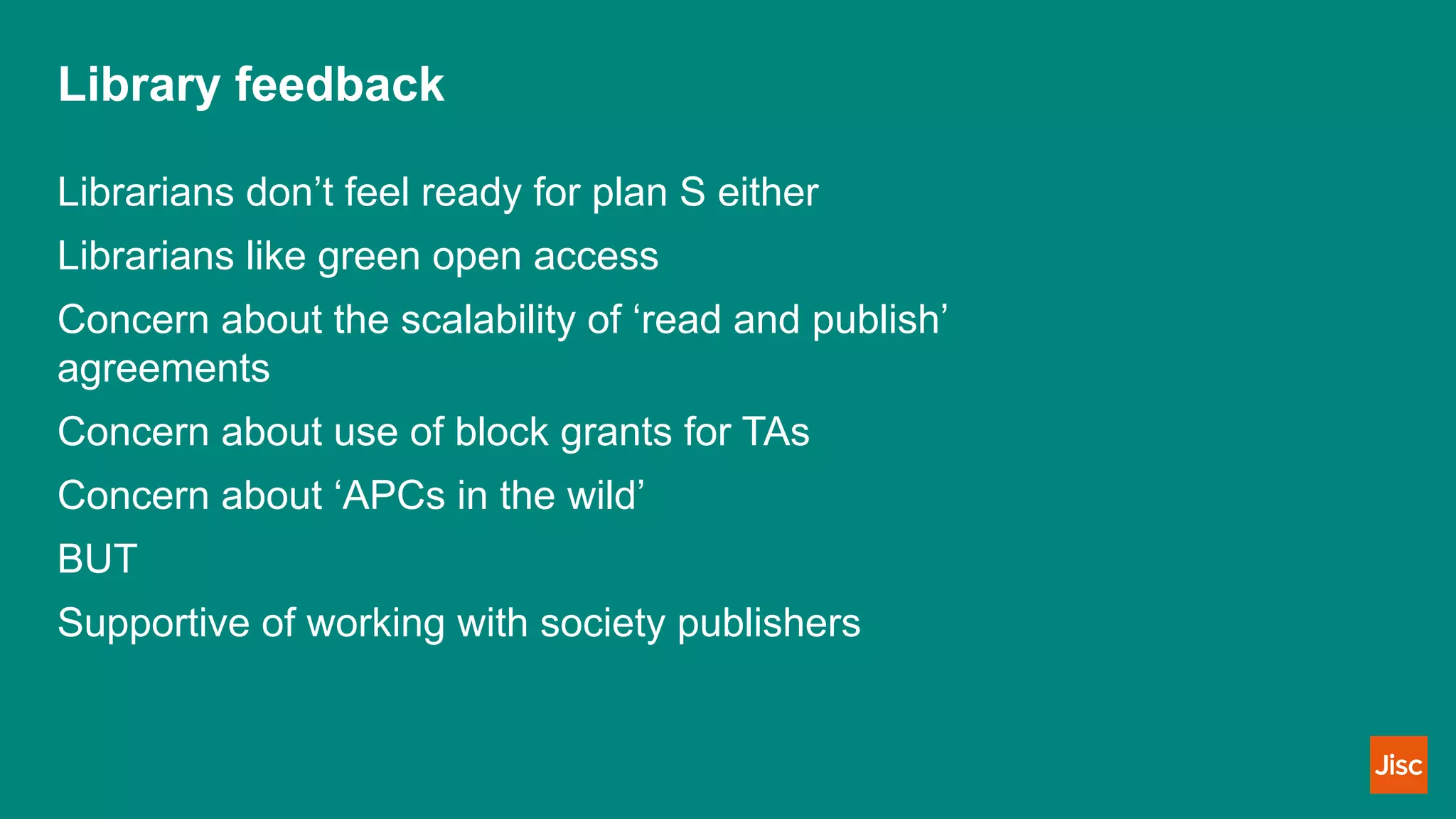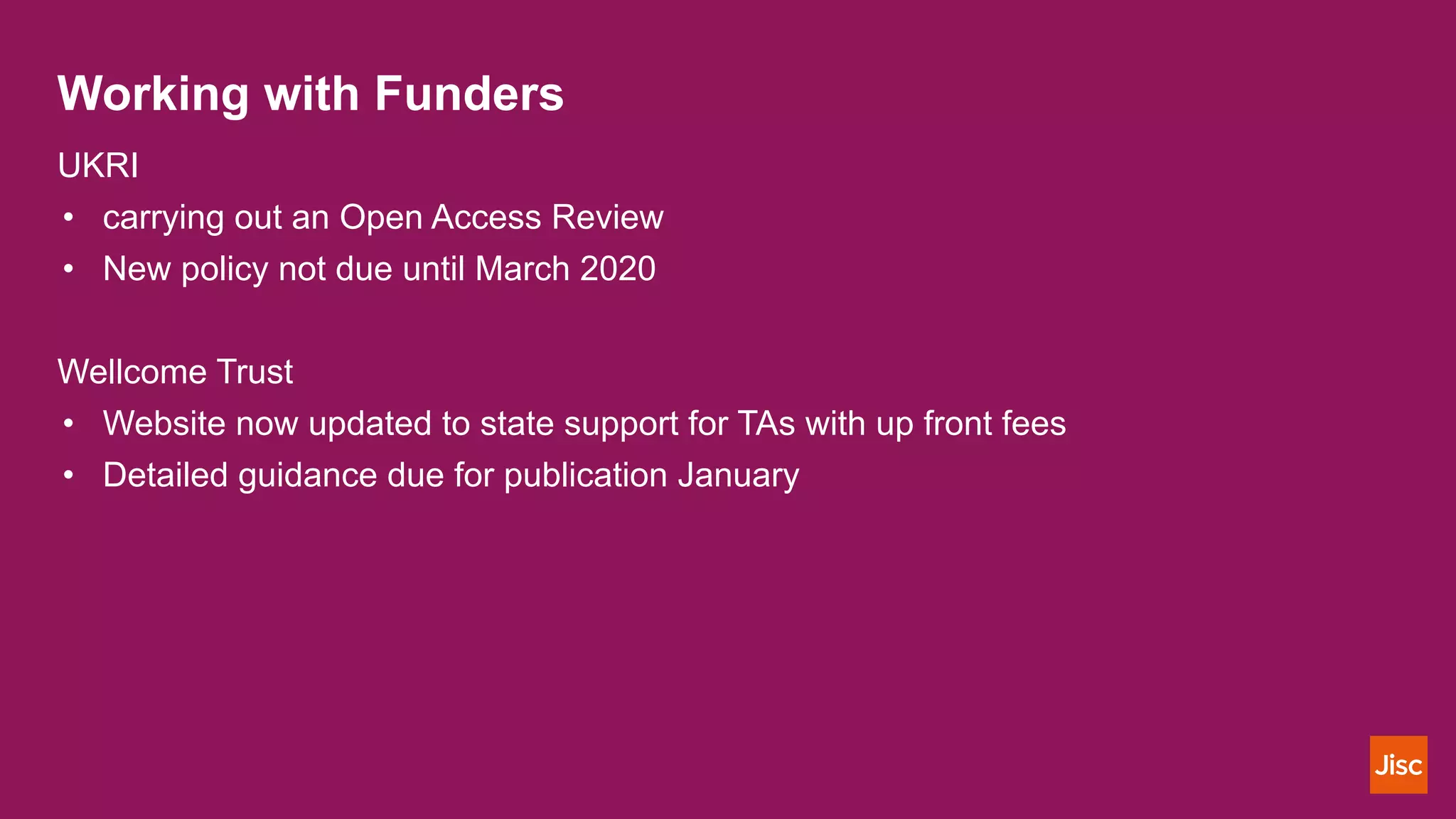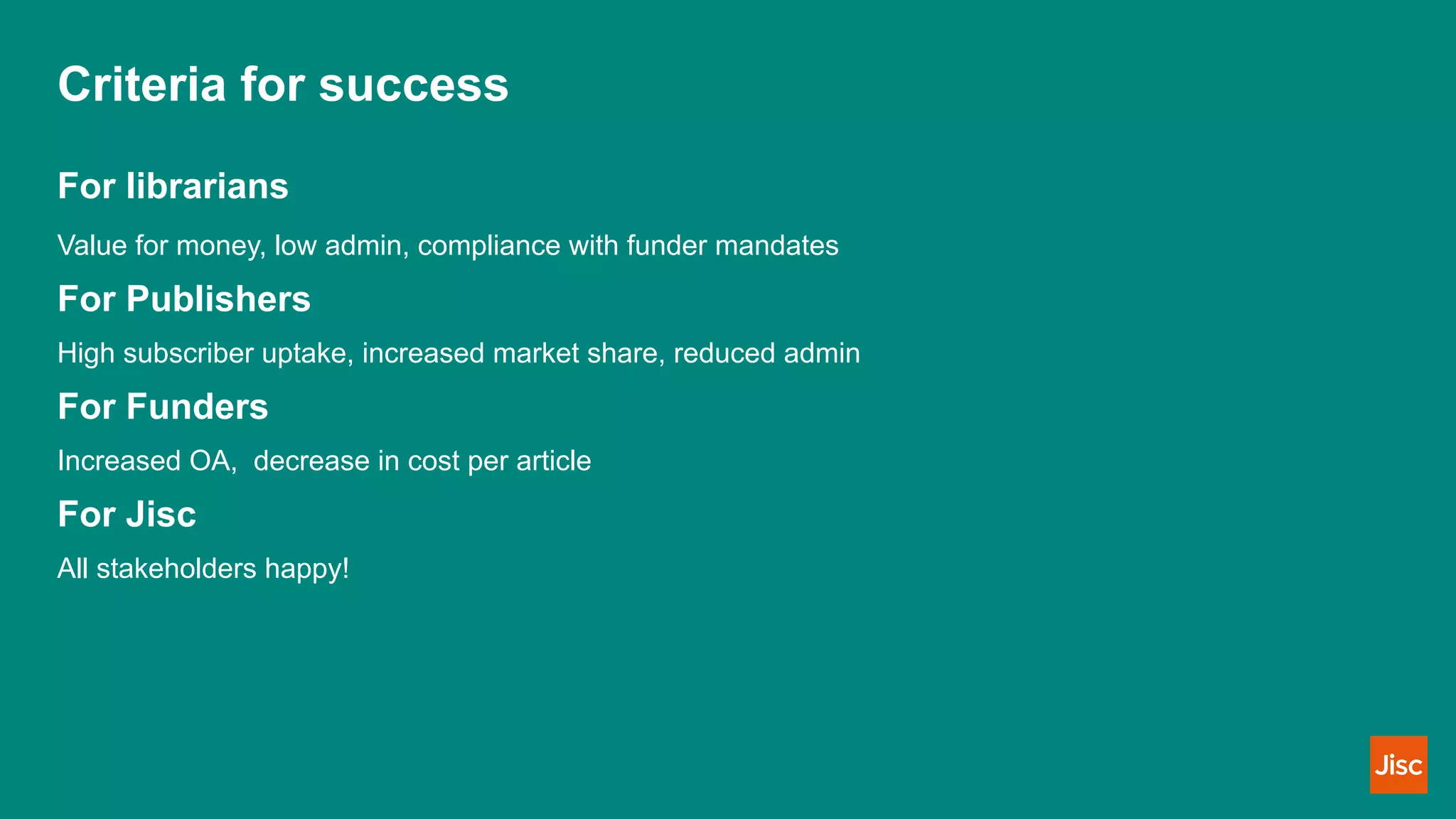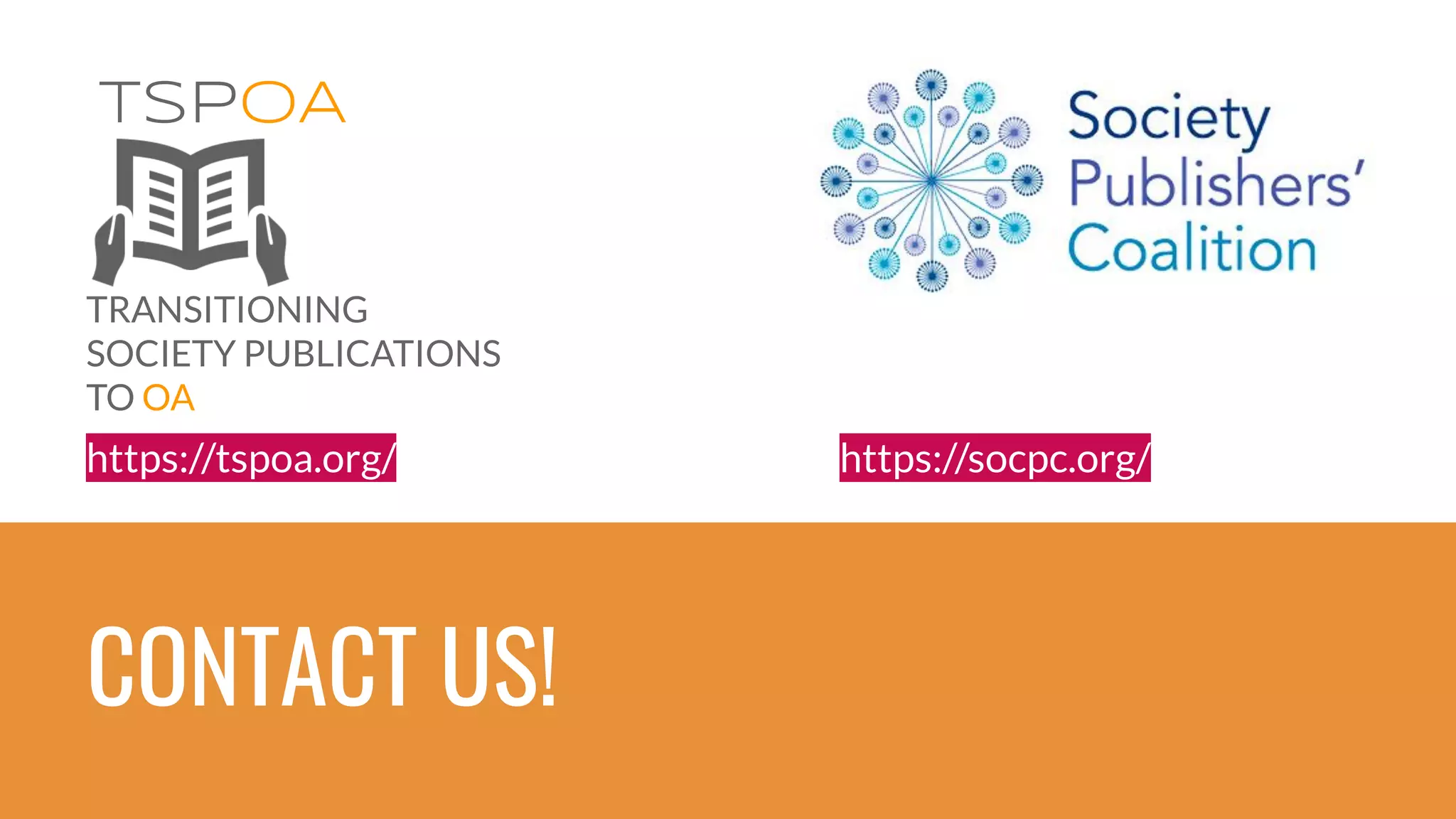The document details a webinar series focused on funding pathways for learned society open access (OA) publishing, featuring various experts addressing the needs and challenges faced by scholarly societies in the evolving communication ecosystem. It explores diverse funding models, including the 'subscribe to open' model, aiming to facilitate OA transitions while taking into account institutional interests and economic incentives. The series also covers collaborative efforts between publishers and institutions to develop sustainable OA strategies and the implications of such transitions for libraries and journals.

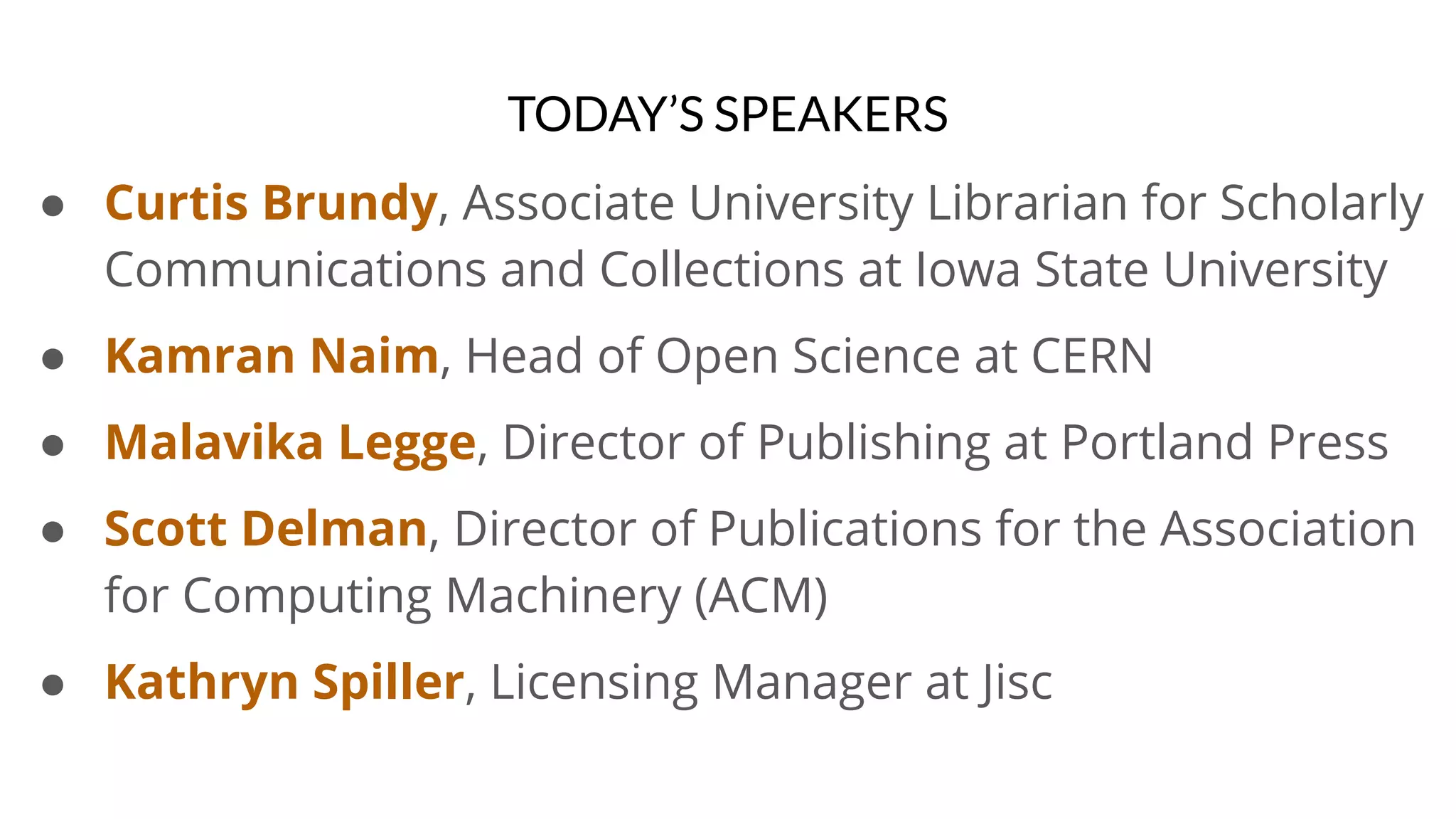
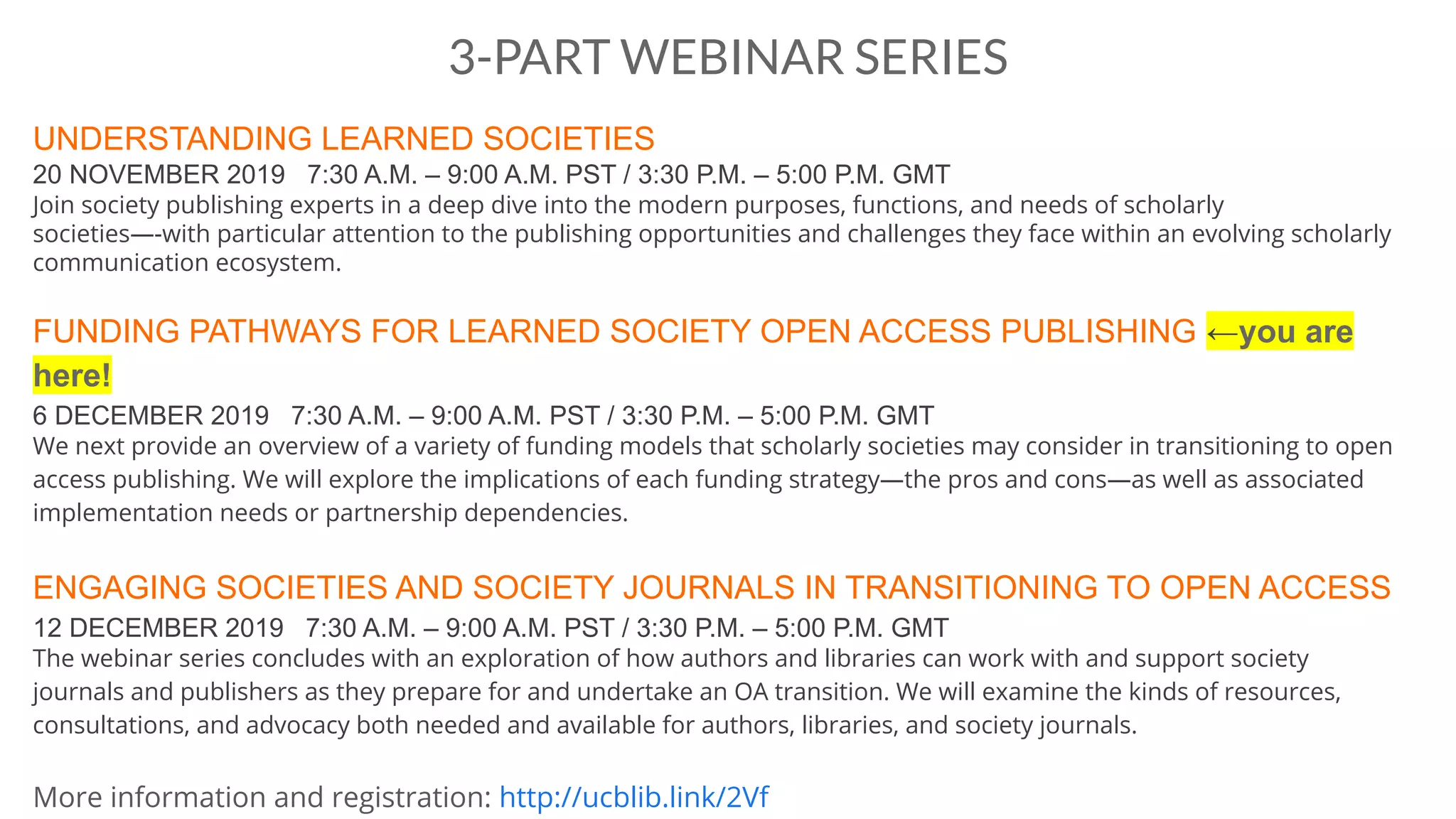
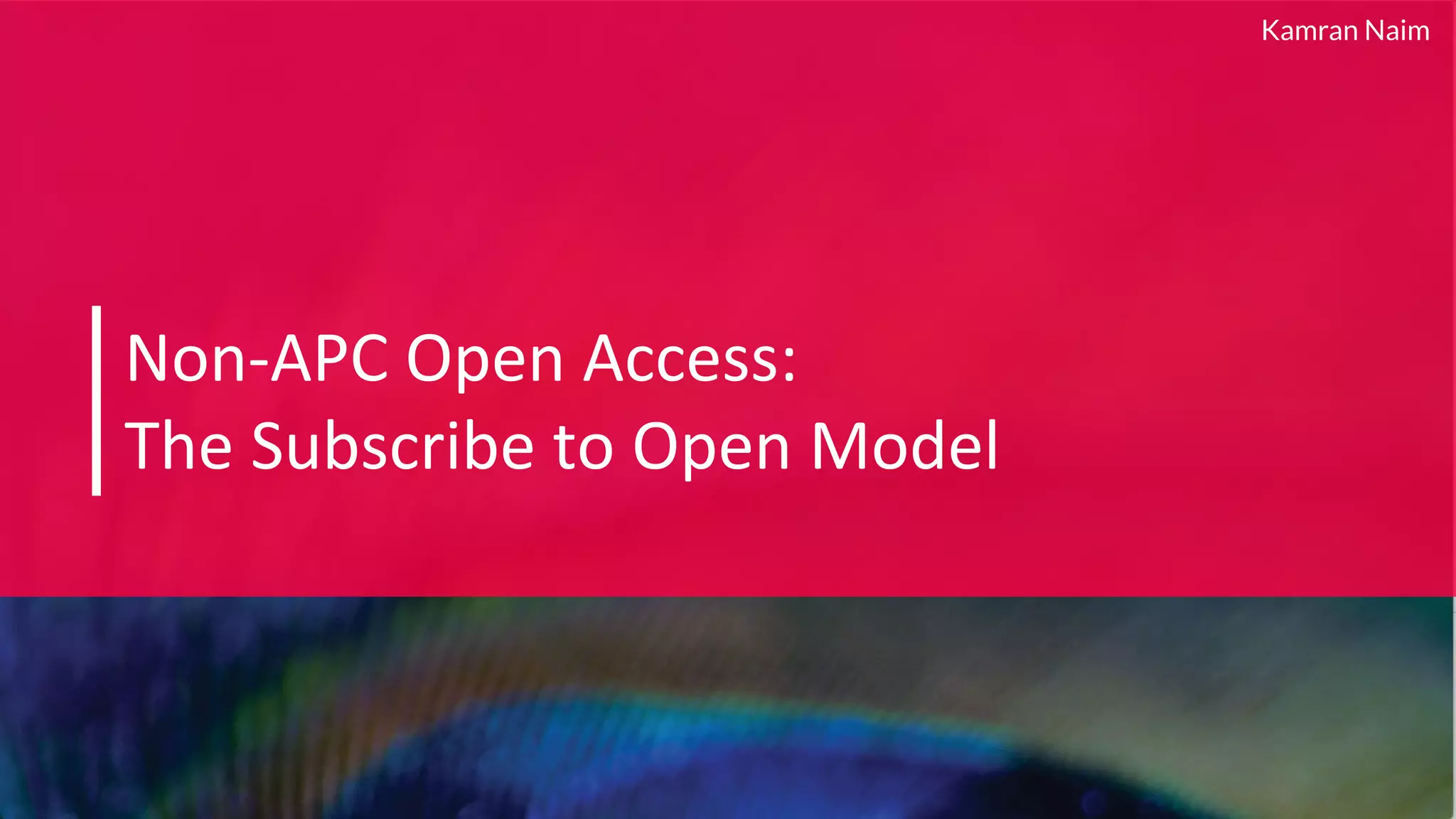
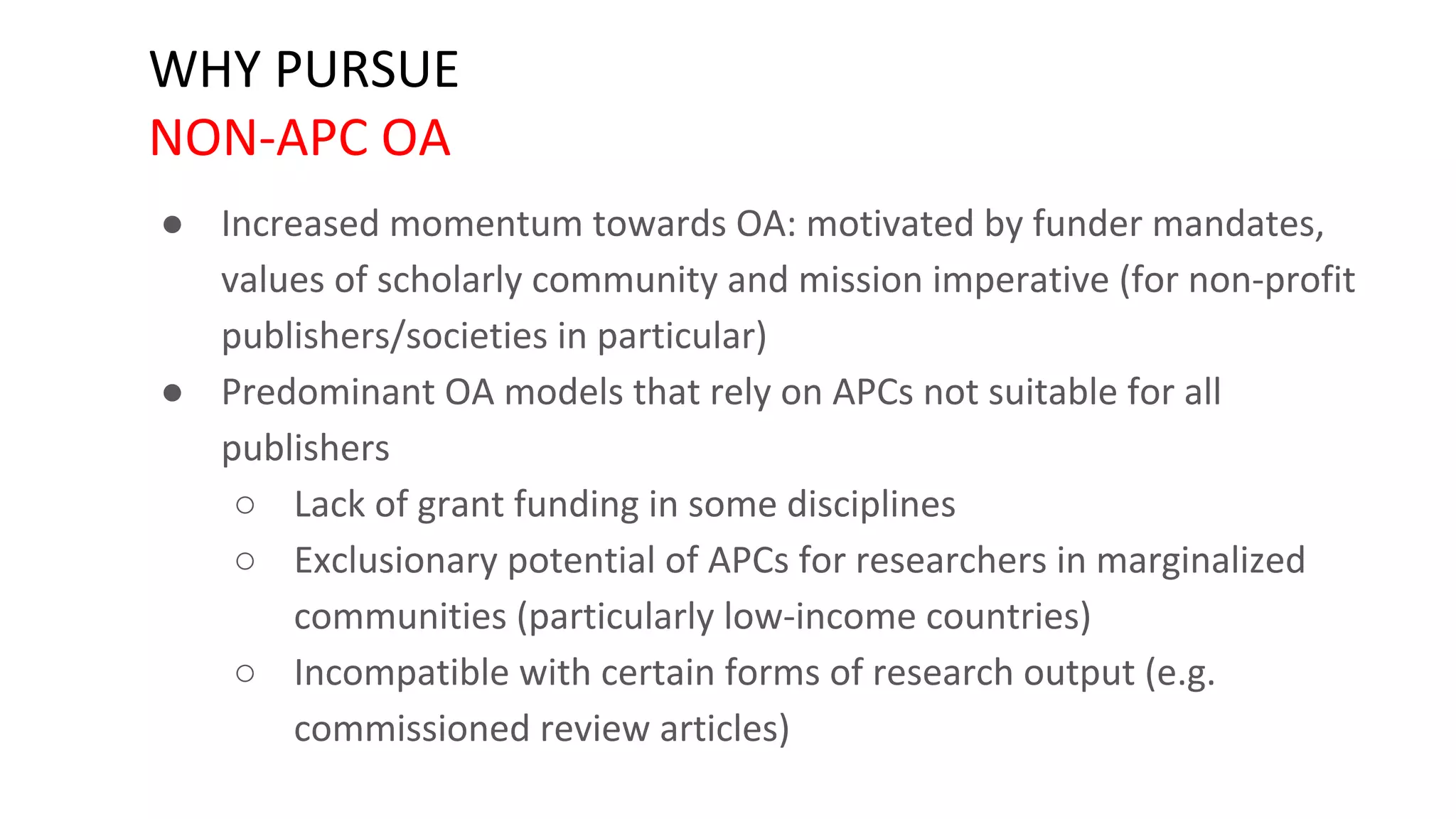

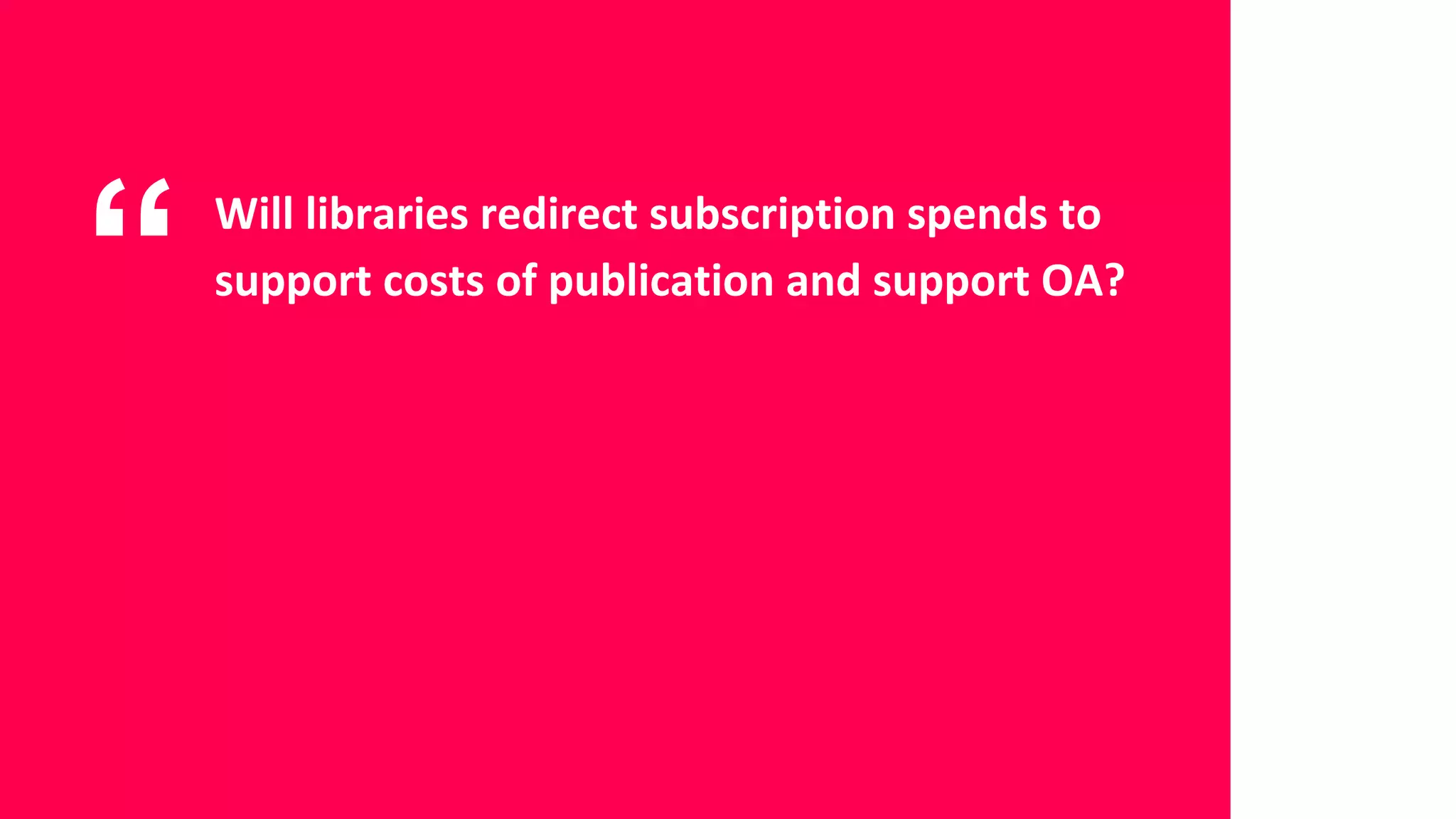


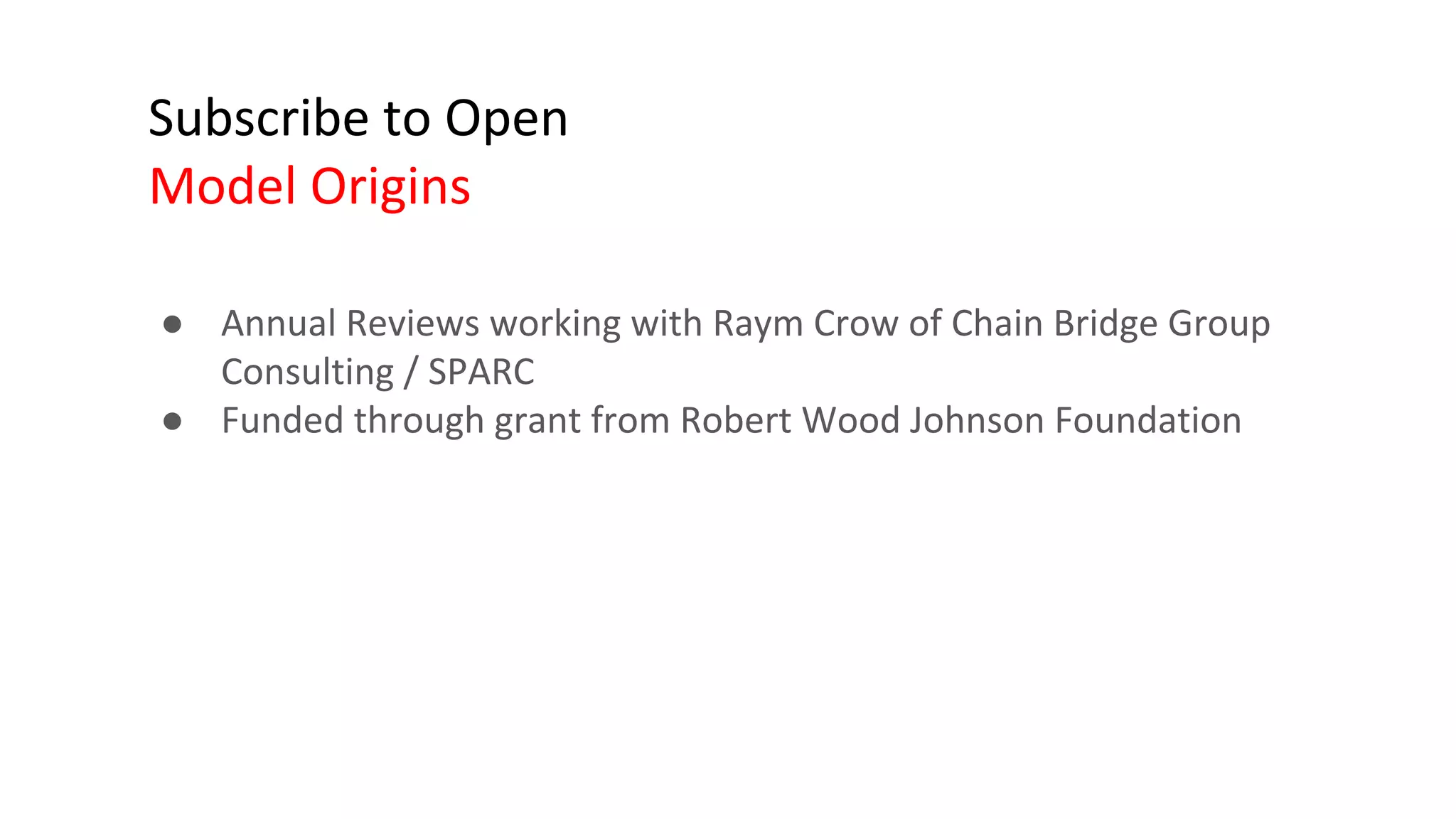
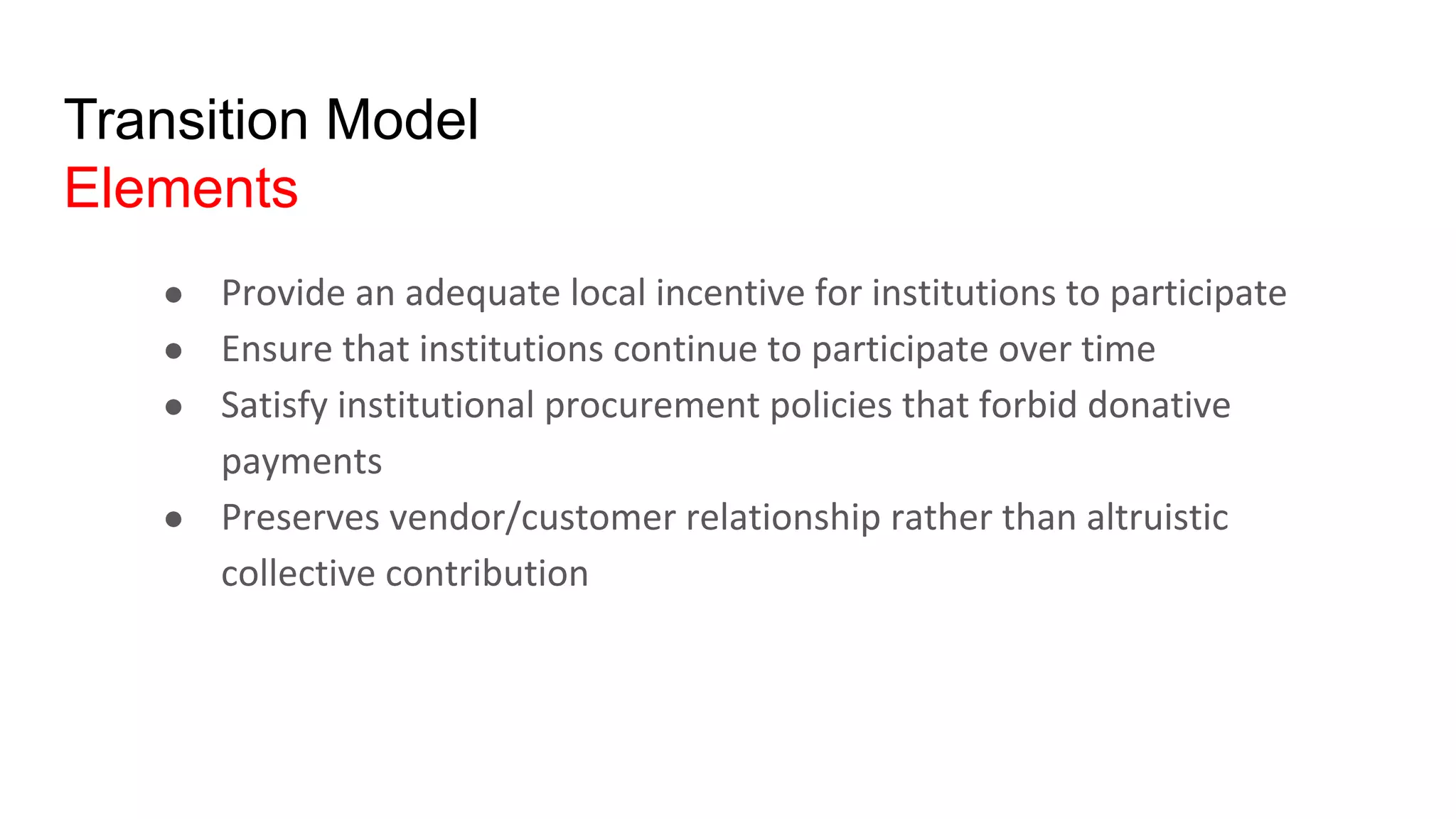
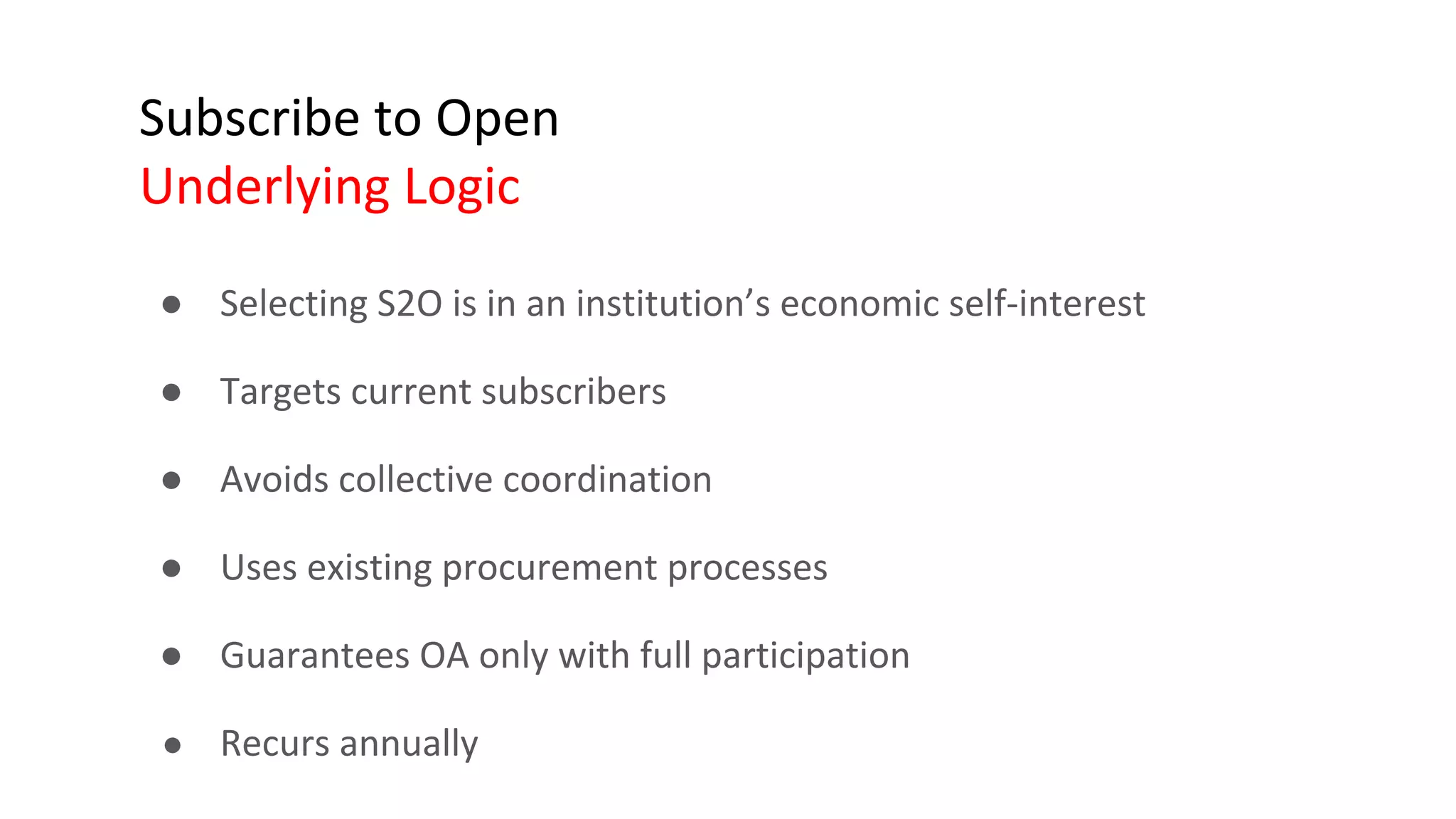
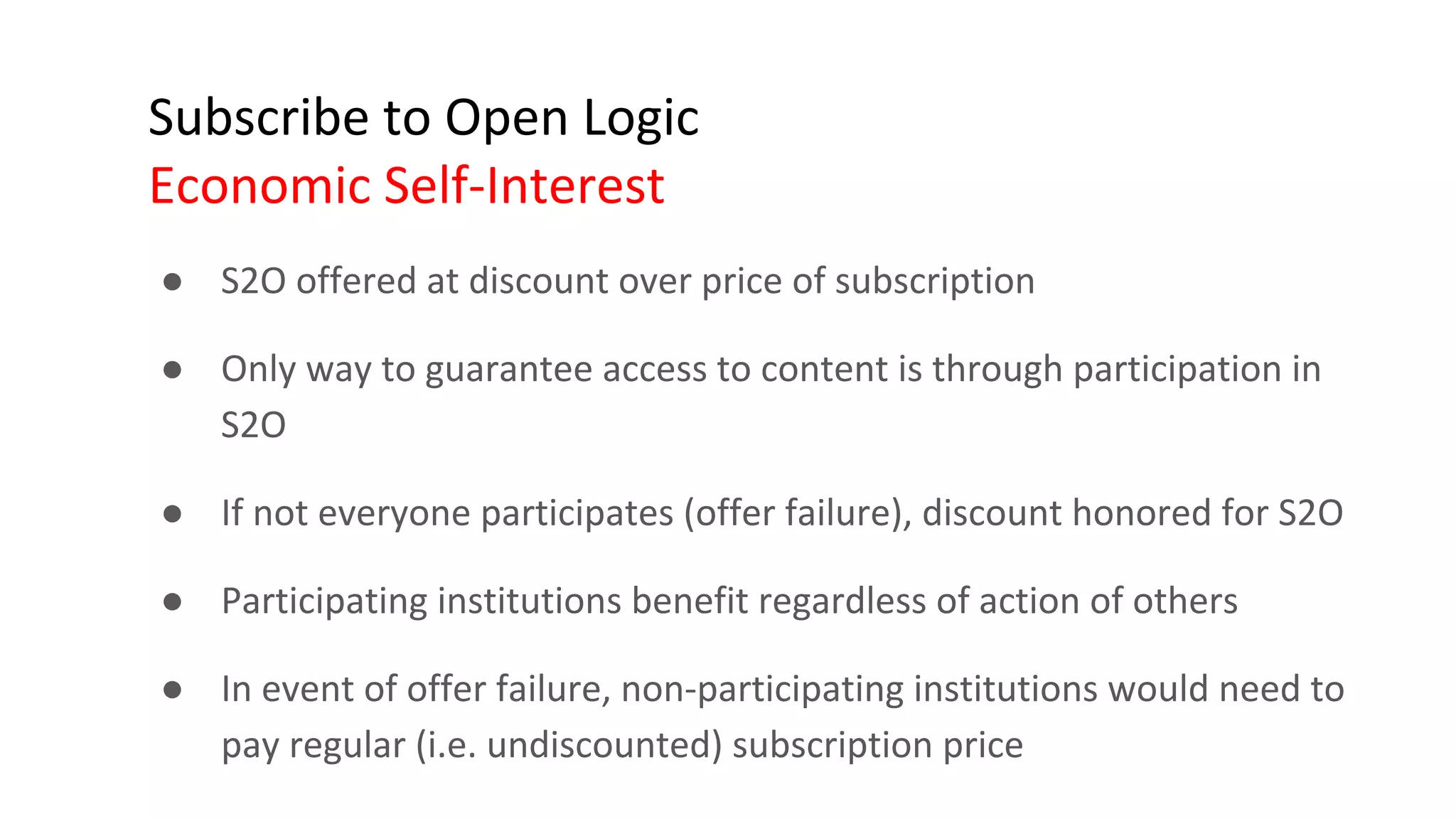
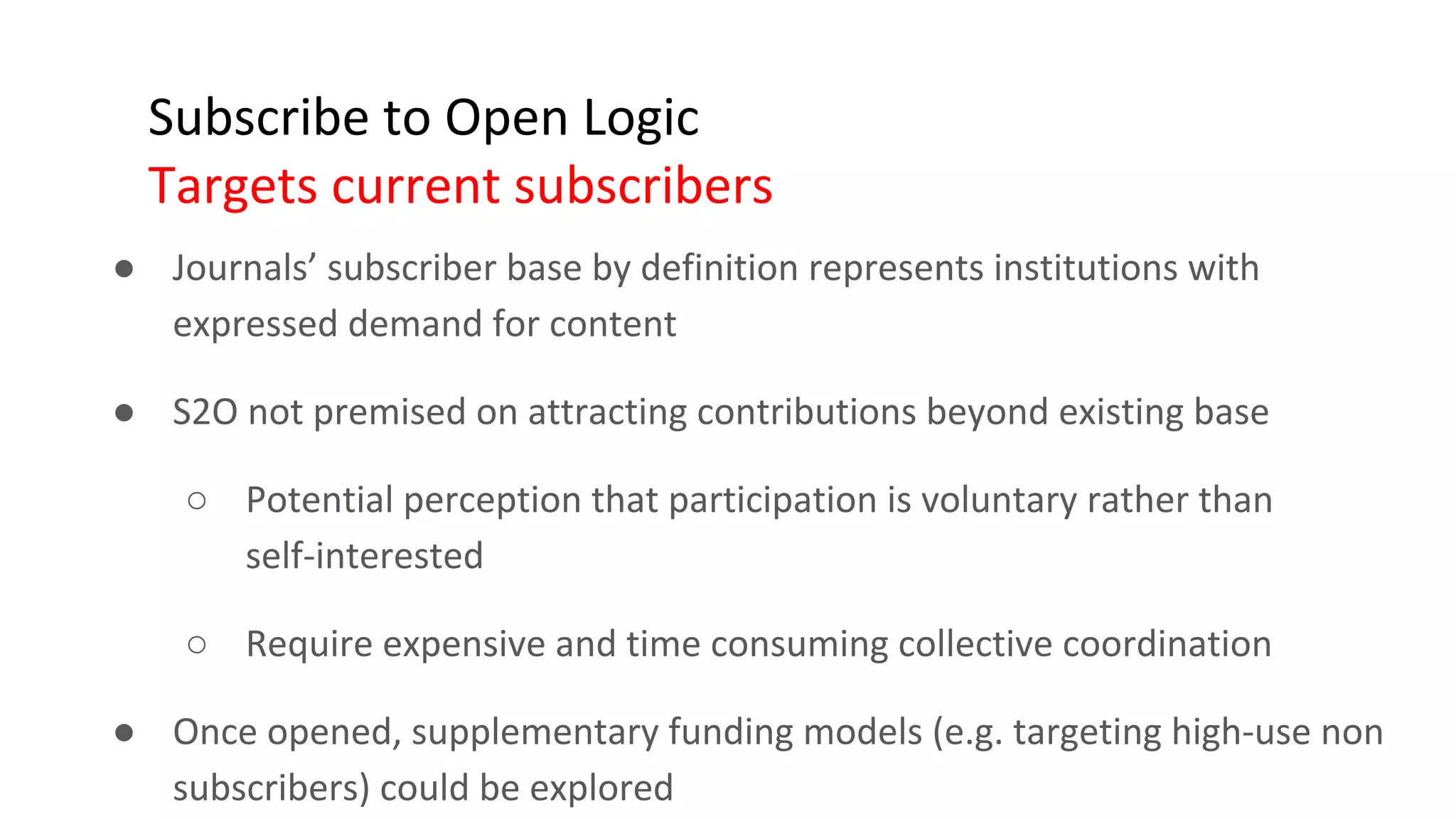
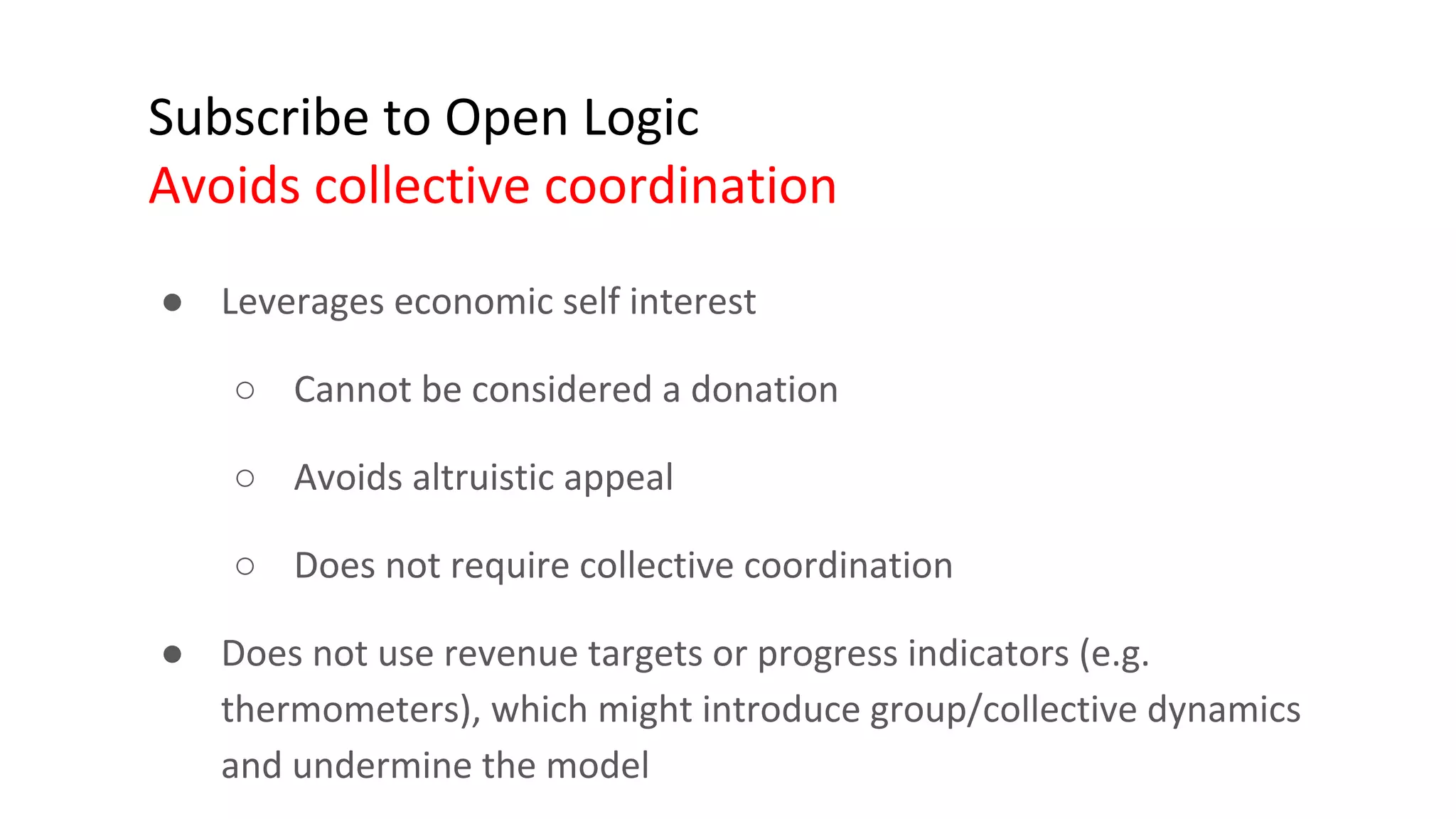
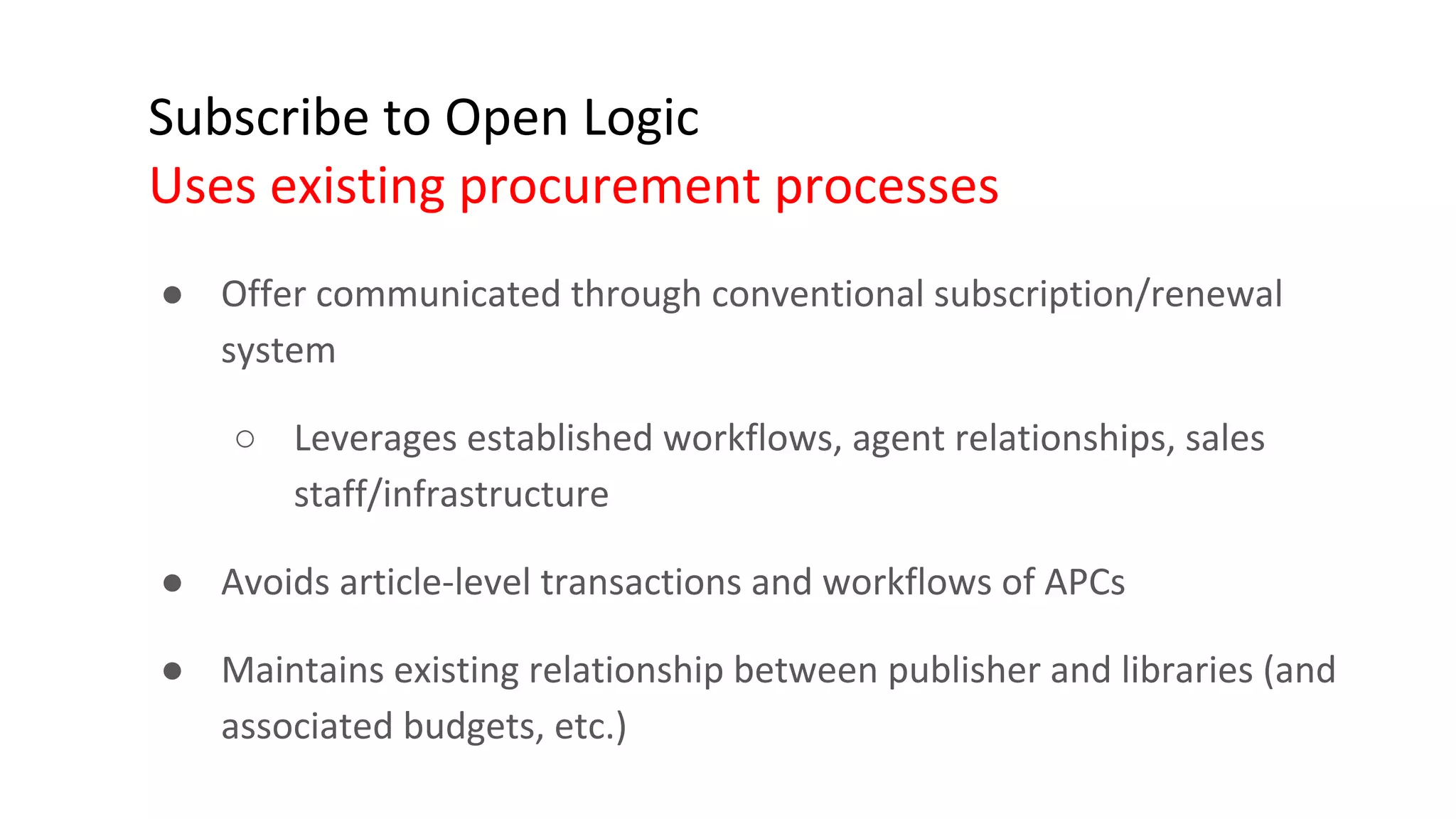
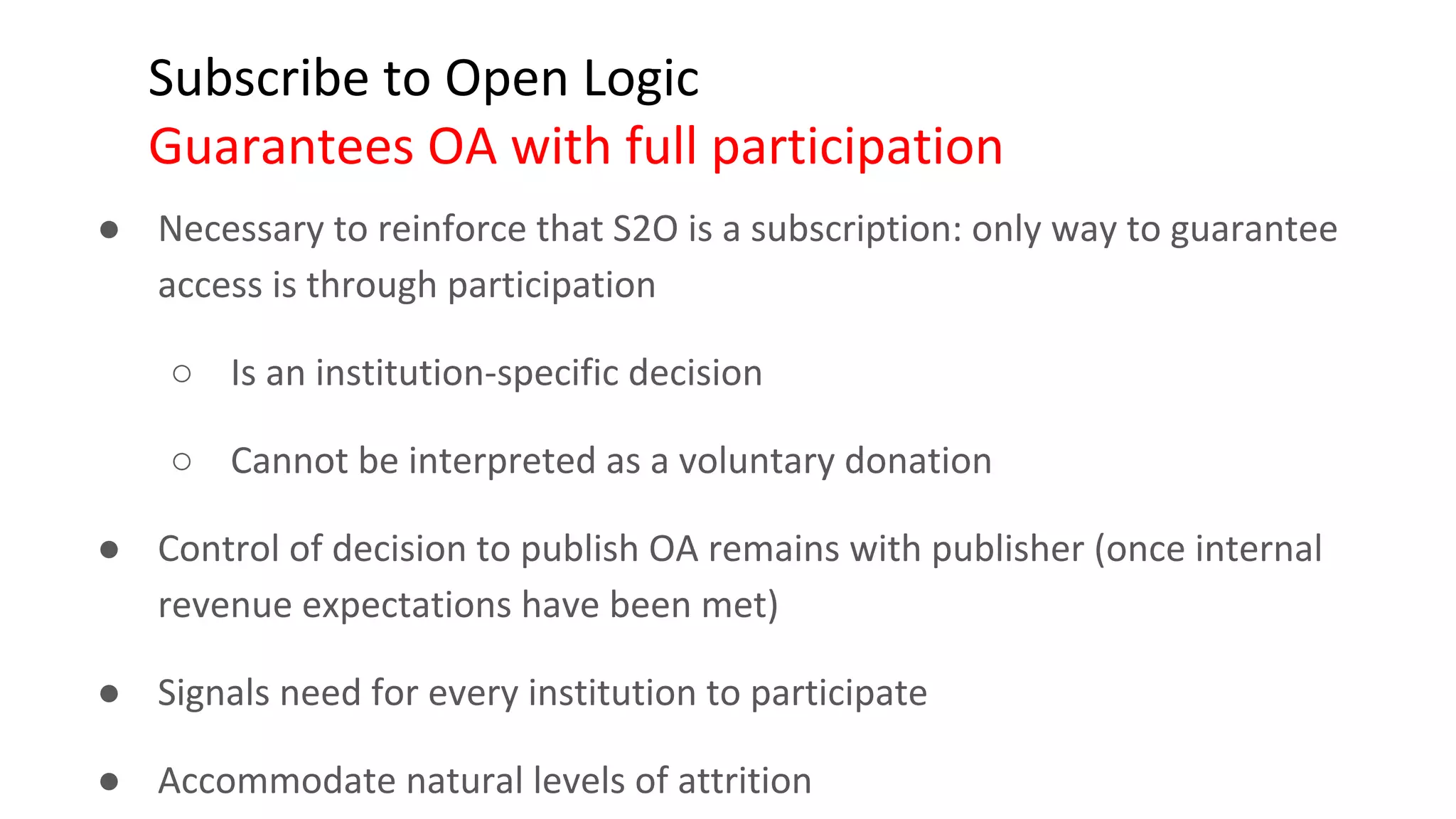
![Subscribe to Open
Presentation
For an Individual Journal to “Subscribe to Open” and Save 5% —
● We will “Subscribe to Open” for 2020 and receive a 5% discount. We
understand that open access to [journal name] in 2020 is only guaranteed if
all subscribers participate. We will receive the 5% discount even if the
content remains gated.
.](https://image.slidesharecdn.com/webinar2fundingpathwaysforlearnedsocietyopenaccesspublishing-200804193514/75/TSPOA-SPC-Webinar-2-Funding-pathways-for-learned-society-open-access-publishing-18-2048.jpg)
![Subscribe to Open
Presentation
For collection subscribers, the invoice copy might read:
● “Subscribe to Open” for 2020 and receive a 5% discount on the [journal
name] portion of the collection price. We understand that open access to
[journal name] in 2020 is only guaranteed if all subscribers participate. We
will receive the 5% discount even if the content remains gated.
.](https://image.slidesharecdn.com/webinar2fundingpathwaysforlearnedsocietyopenaccesspublishing-200804193514/75/TSPOA-SPC-Webinar-2-Funding-pathways-for-learned-society-open-access-publishing-19-2048.jpg)
